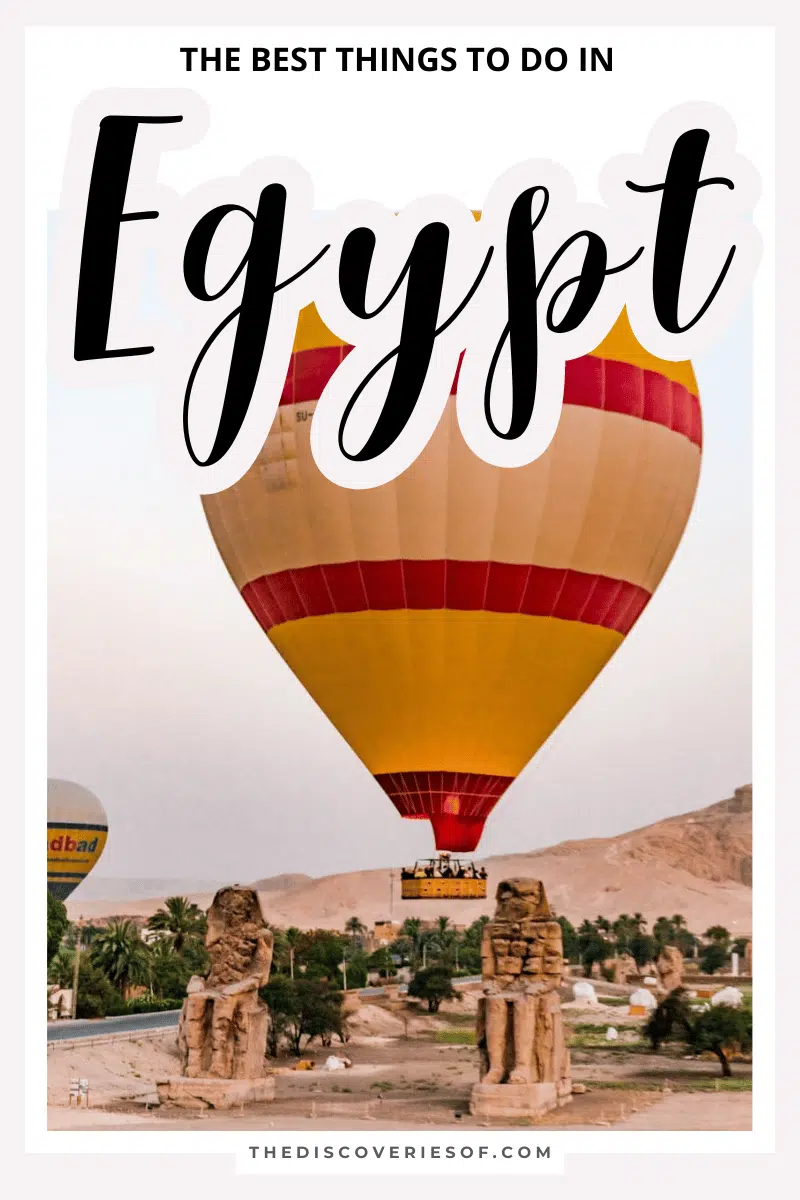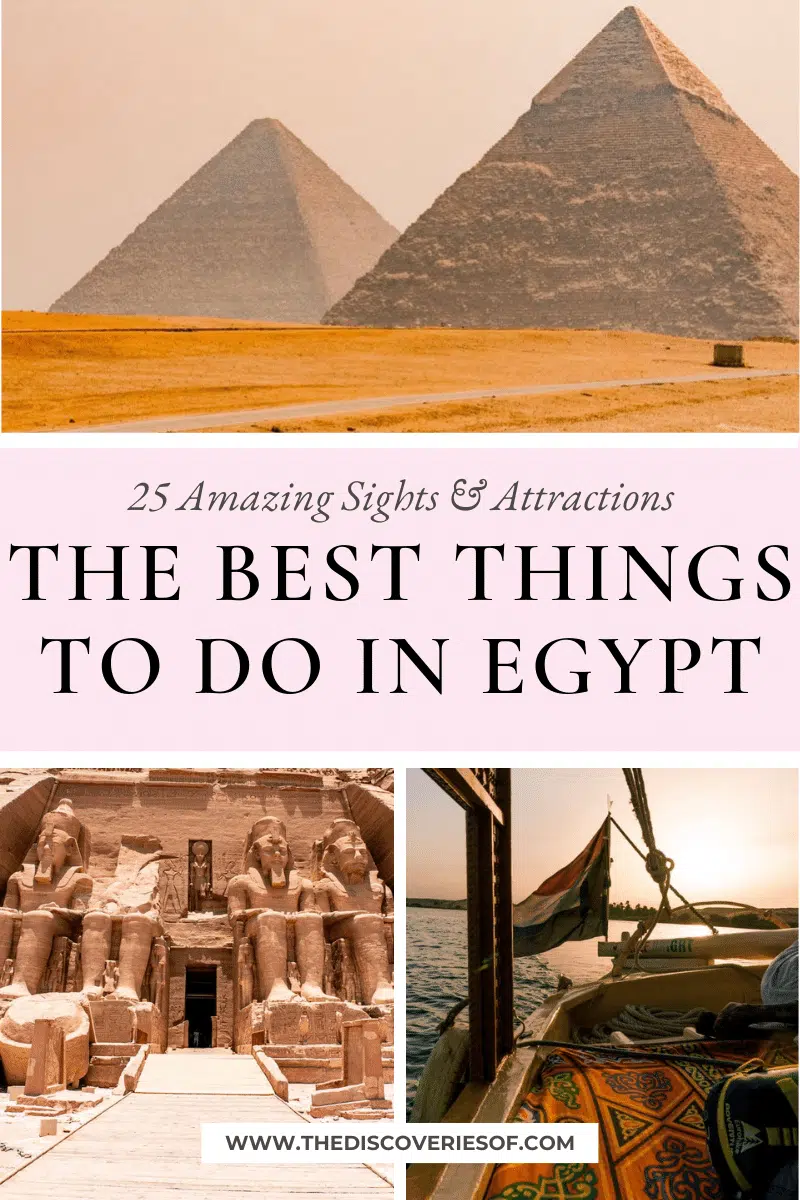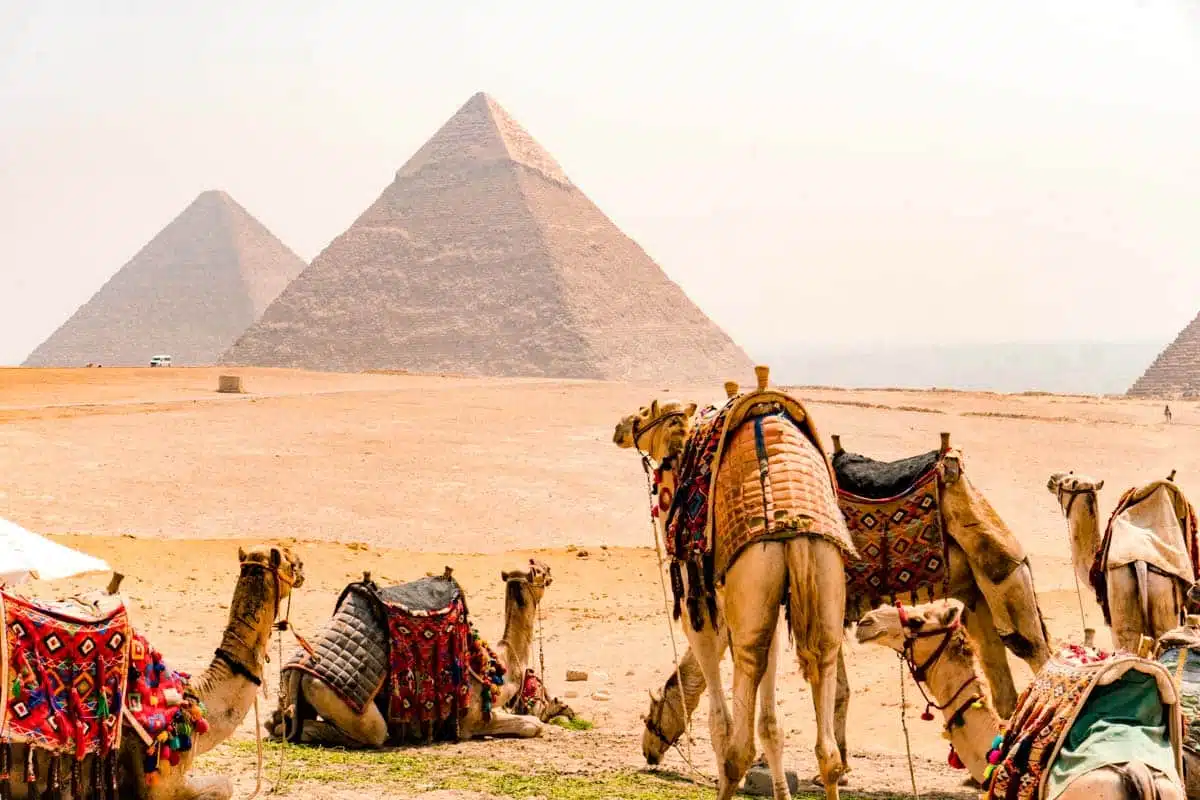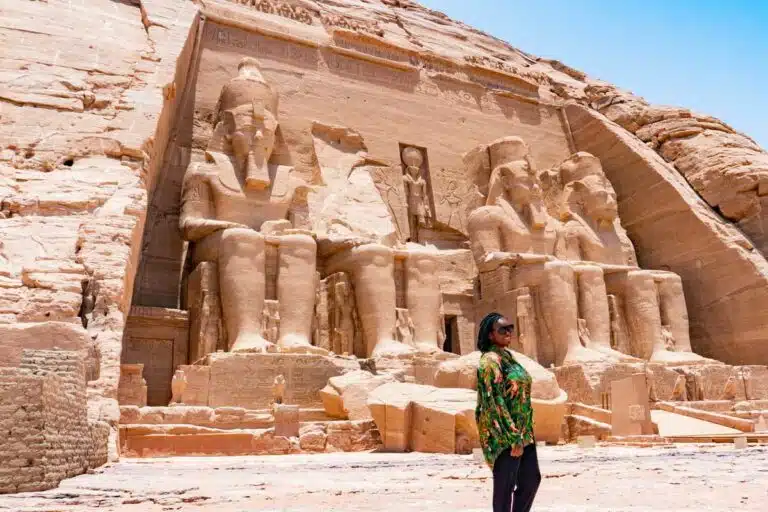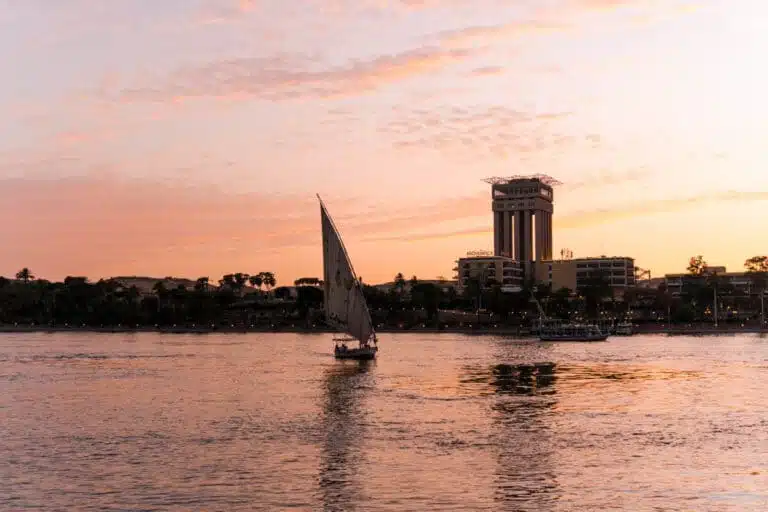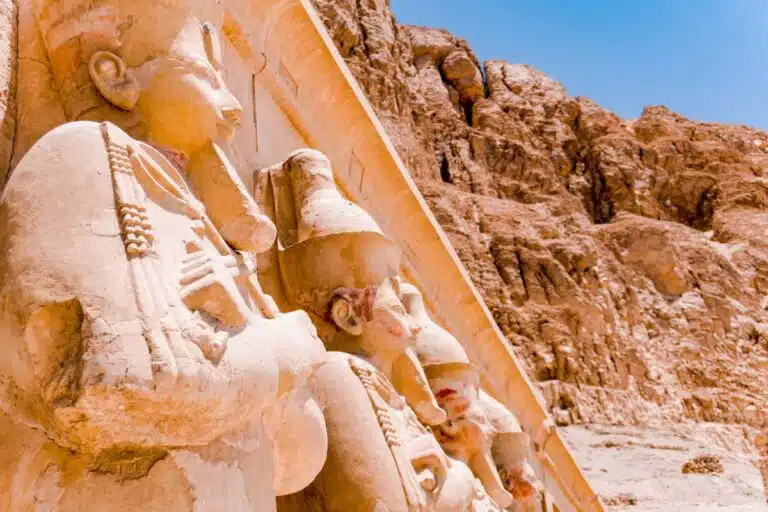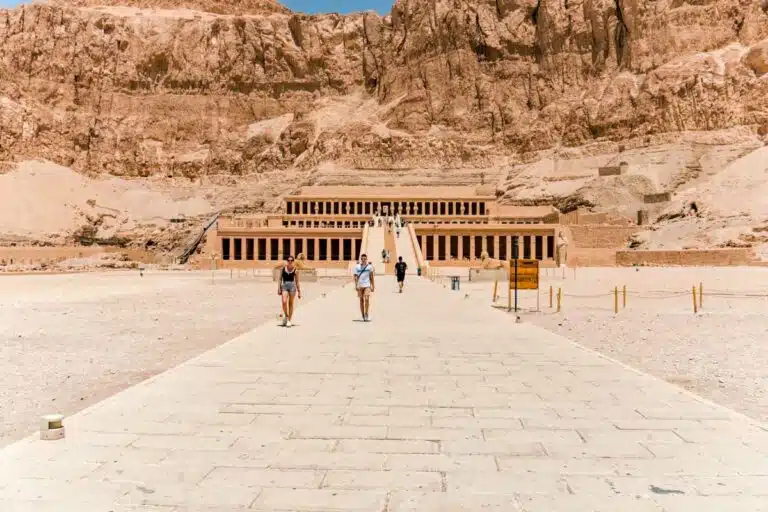Have you ever wondered why Egypt attracts flocks of tourists, historians, and adventure-seekers? Well, buckle up and dive into this expert’s guide to the best things to do in Egypt – the sights and attractions you shouldn’t miss.
If you’re planning (or even just dreaming of) a trip to Egypt – I have some sage advice for you… book it.
We’ve all heard tell of this fabled land – one filled with pyramids, ancient tombs and stone-built temples, carved lengthways by the sinuous Nile. Well – it’s all true – Egypt really does live up to its reputation.
Those of you following along here will know that I’ve recently spent a couple of brilliant weeks travelling around Egypt with a guide and – I don’t say this lightly – it was one of my favourite trips ever.
Enough about me though, this guide is all about helping you plan a stellar Egypt trip and walking you through all the places you shouldn’t miss.
Let’s dive into the best attractions in Egypt – hold on to your hats!
Looking for a place to stay? The Steigenberger Pyramids Cairo hotel offers jaw-dropping scenery of the nearby Pyramids of Giza.
PS: Take a sneak peek at my full Egypt itinerary in this video!
Top 5 Things to Do in Egypt
Visit the Pyramids of Giza
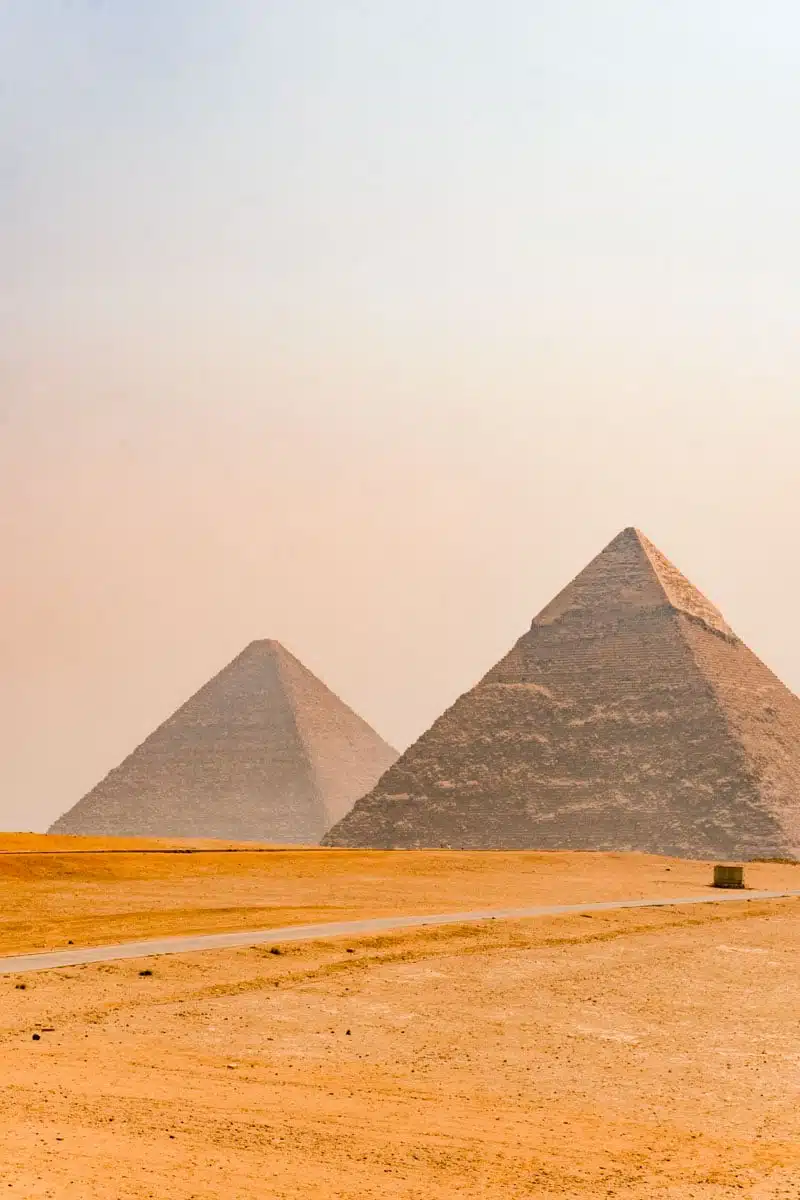
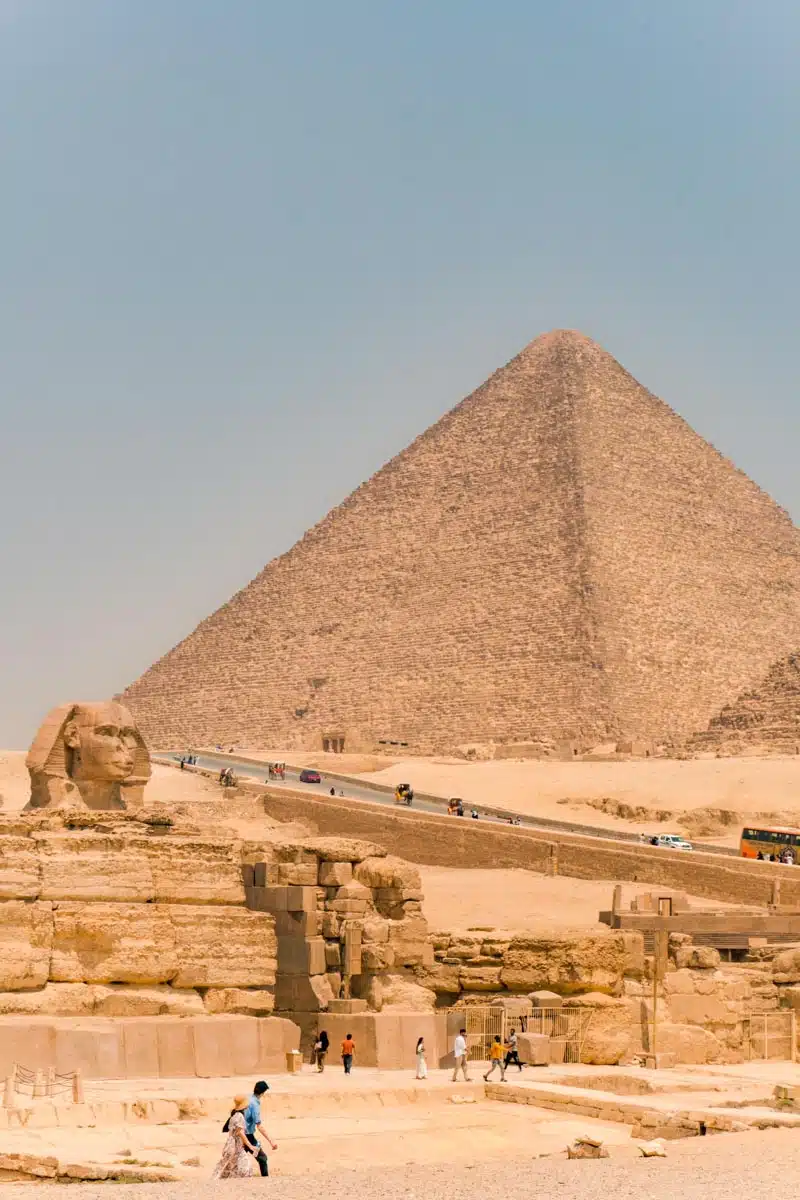
Undeniably at the top of any list of Egypt’s tourist attractions, Cairo’s mighty Pyramids of Giza are a symbol of the country’s ancient architectural prowess.
As if the three aren’t stunning enough, The Great Pyramid is the last remaining Ancient Wonder of the World – placing it front and centre as the best place to visit Egypt.
I have to say – I almost burst with excitement seeing them up close and personal.
PS: If I only give you one tip, it’s to pay extra to go inside the Great Pyramid. Here – I’ll even give you a sneak peek of what to expect.
@thediscoveriesof Ever wondered what it looks like inside? 🤔 see the whole egypt itinerary 👉🏾 @thediscoveriesof #egypt #egypttravelguide #egyptrip #greatpyramid #cairotravel #travelbucketlist ♬ Running Up That Hill (A Deal With God) – Kate Bush
But what’s the deal with the Pyramids of Giza?
Built sometime between 2550 BC and 2490 BC with nothing but chisels, iron hammers, levers and, of course, lots of manpower, The Pyramids of Giza as they’re collectively known, stood as burial temples full of gold and other riches.
Individually, the three pyramids – of Khufu, Khafre, and Menkaure – built in that order, are even more stunning up close.
Top Tip: Book a half-day guided tour to learn all about the pyramids too
Explore The Valley of the Kings (And The Valley of the Queens)
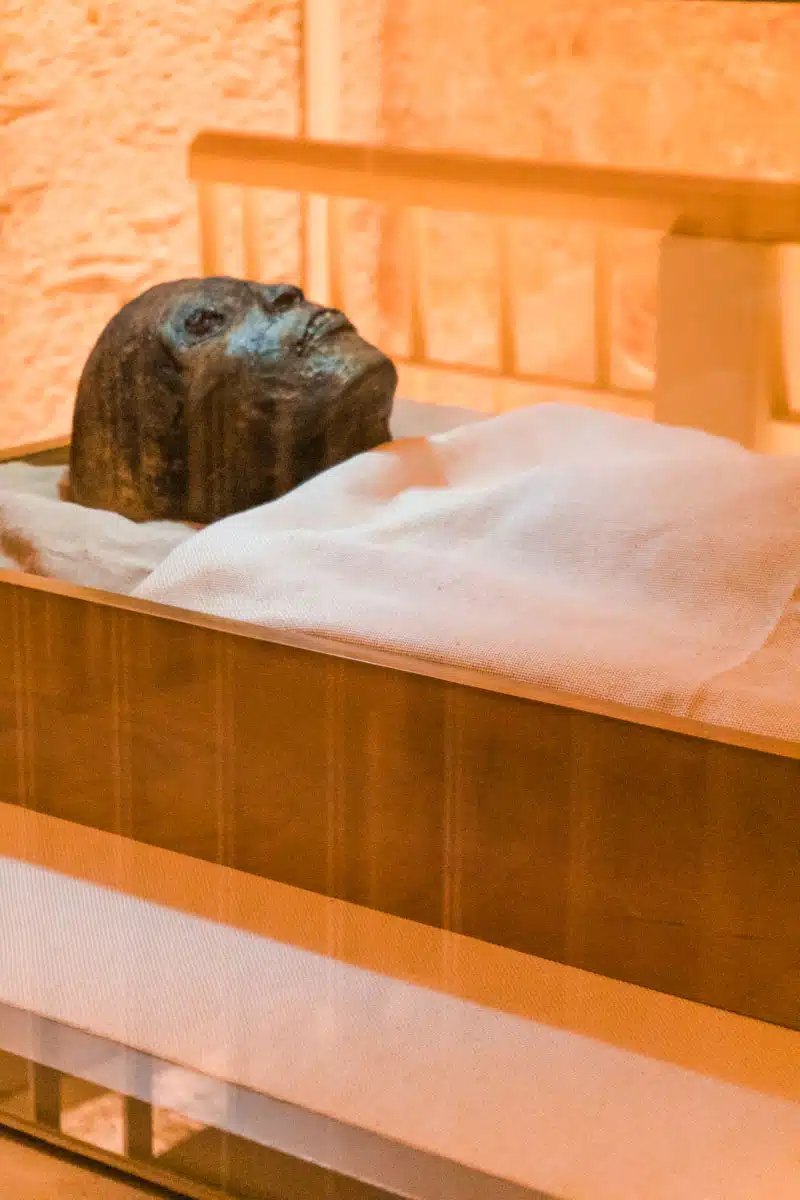
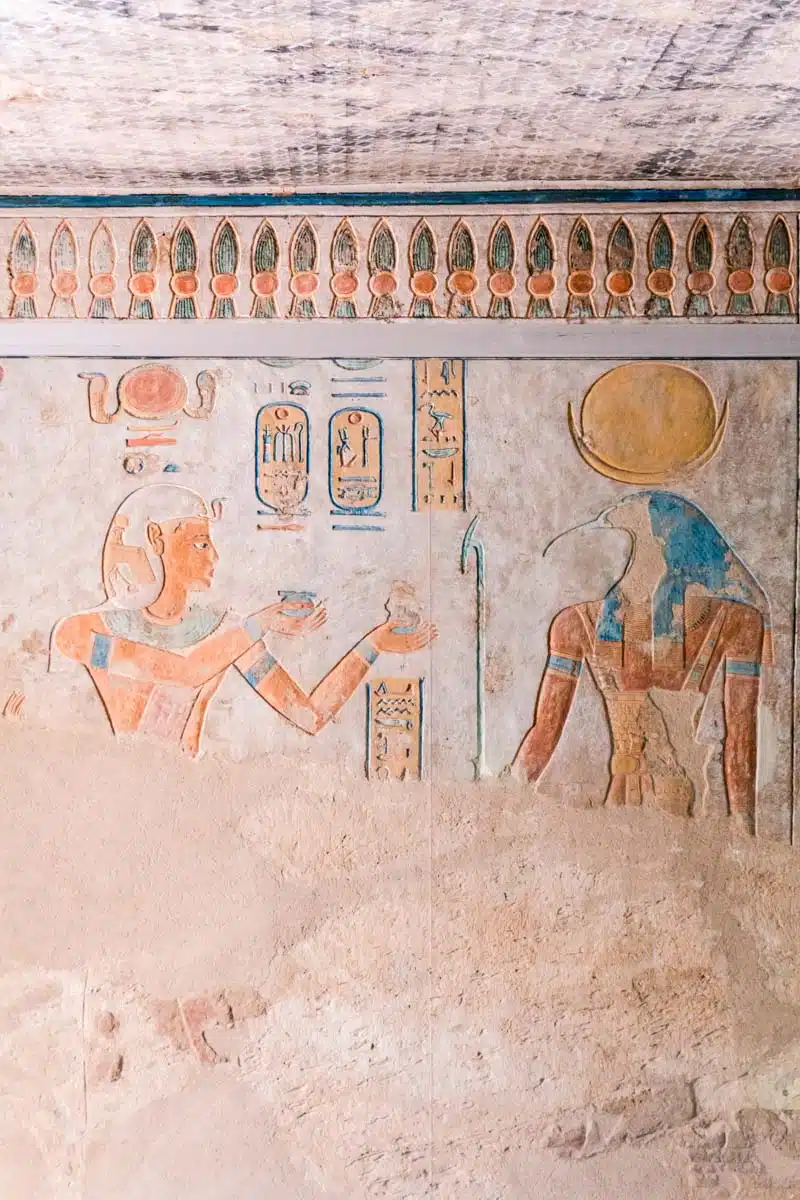
The world’s best-known necropolis (wait, is that even a thing?) The Valley of the Kings (and the less well-known Valley of the Queens) boast a series of royal tombs.
Not just any royal tombs either, but rather ones containing the creme de la creme of the 18th, 19th and 20th dynasties (the New Kingdom).
They’re aesthetically decorated with ornate murals and sculptures and, when they were built, would have been filled with treasures for the deceased to use in the afterlife. Now that’s one way to lay to rest.
For thousands of years, kings, queens, and other nobles of the earmarked these valleys as tomb sites. They hoped to prevent robbers and raiders alike from plunging their afterlife treasures.
There’s so much to see in each area that I’ve written individual guides to visiting The Valley of the Kings and the Valley of the Queens – but if you need a quick takeaway, don’t miss the tombs of Tutankhamun and Queen Neferteri.
Top Tip: If you book a tour of the valleys, be sure to book the extra tickets to visit Tutankhamun’s tomb in the Valley of the Kings and Queen Nefertari’s tomb in the Valley of the Queens.
Take a Hot Air Balloon Ride over Luxor
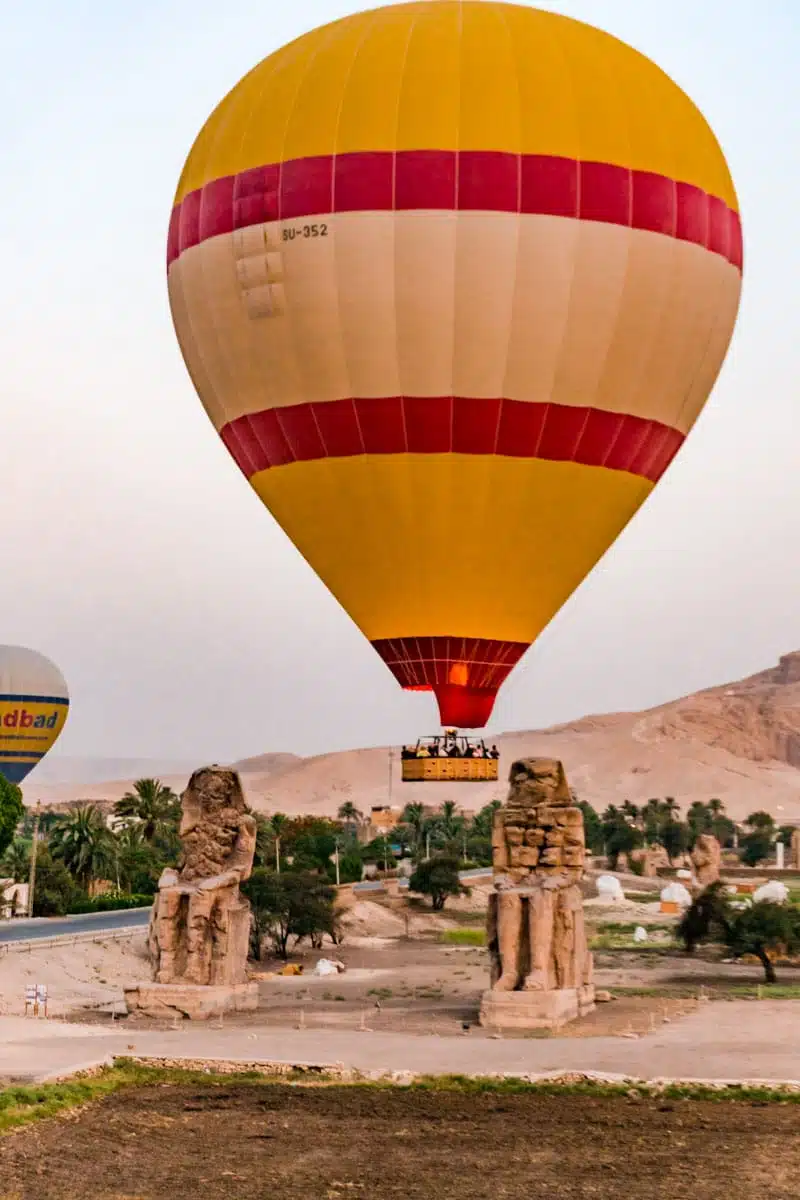
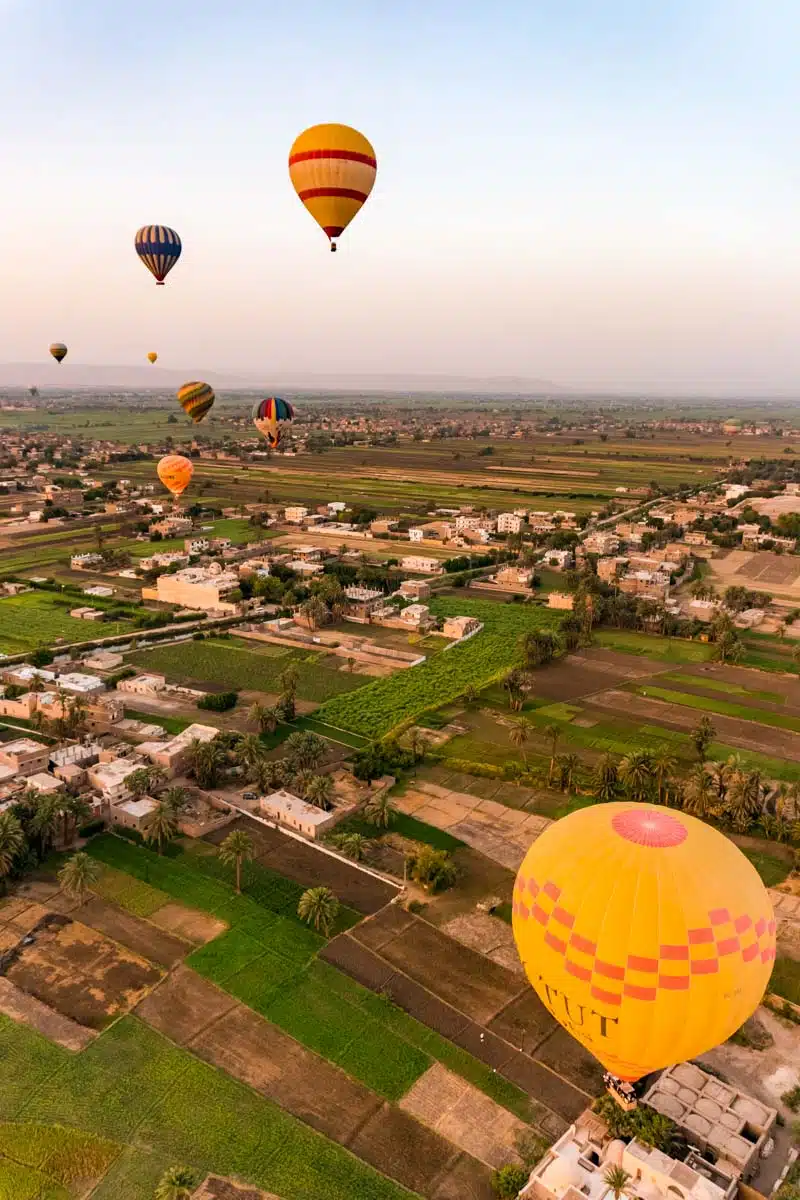
Luxor is a modern Egyptian city nestled within the ancient Egyptian capital of Thebes. There’s so much to discover in the region, which is dotted with historic temples, monuments, and royal burial valley – and, IMHO, taking a hot air balloon ride is hands down the best way to see this intriguing metropolis.
Experience one of the most stunning sunrises in the world, boasting an eyeful of Valley of the Kings and the Queens.
That would be worth the experience alone – but then there’s the added bonus of views of the Mortuary Temple of Hatshepsut, the Colossi of Memnon and the stunning rolling dunes of the Egyptian desert thrown in for good measure.
Top Tip: Ensure you book a hot air balloon at sunrise for the best views.
Read Next: Hot Air Ballooning Over the Valley of the Kings
Float Down the Nile on a Cruise
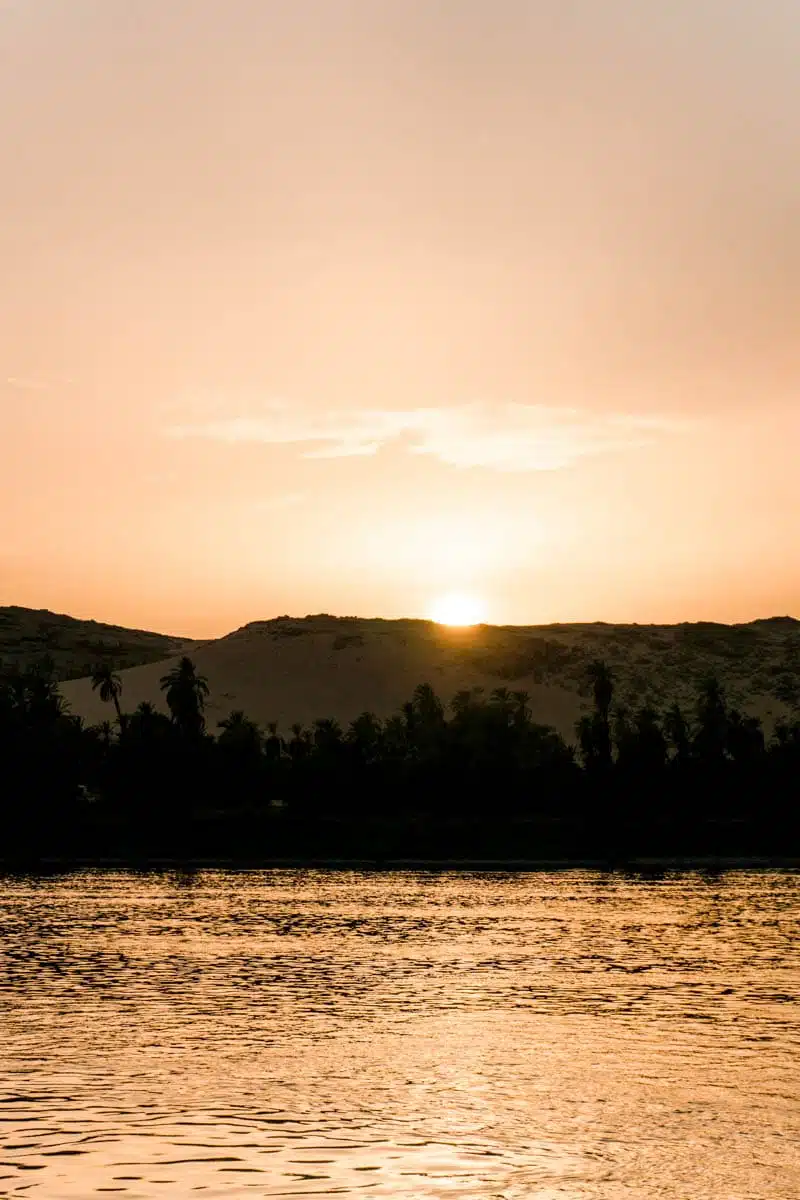

Perhaps the most visited tourist attraction in Egypt (after the Giza Pyramids), the 6,650 km-long Nile River is the lifeline of the nation.
How better to explore it than onboard a Nile Cruise?
Very few cruises ply the whole route of the Egyptian Nile, but the section between Aswan and Luxor is the most popular stretch for cruises. This is largely thanks to an abundance of sights from Philae Temple to the Temple of Kom Ombo to stop off along the way.
Different types of boat ply the route – from basic (but peaceful) feluccas to all-out luxury cruises.
Top Tip: Not sure which type of cruise to book? I’ve written all about them in this Nile Cruise guide
Marvel at Abu Simbel
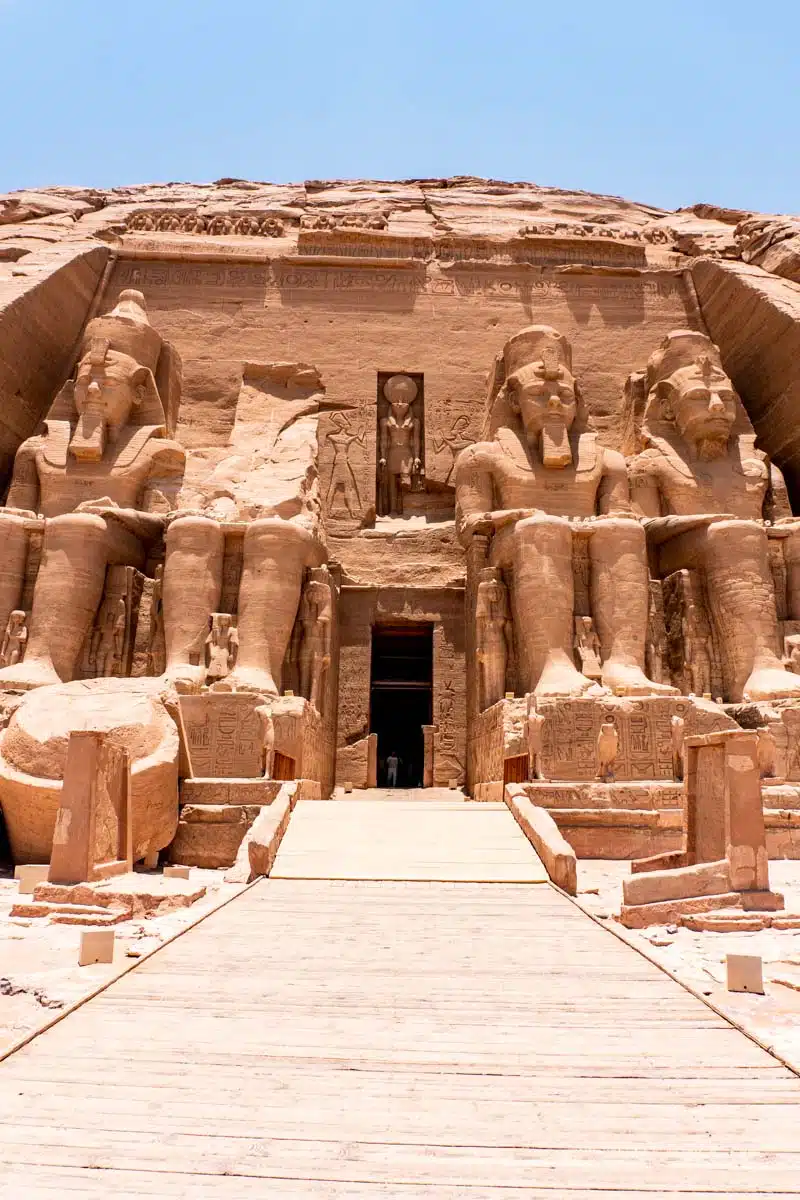
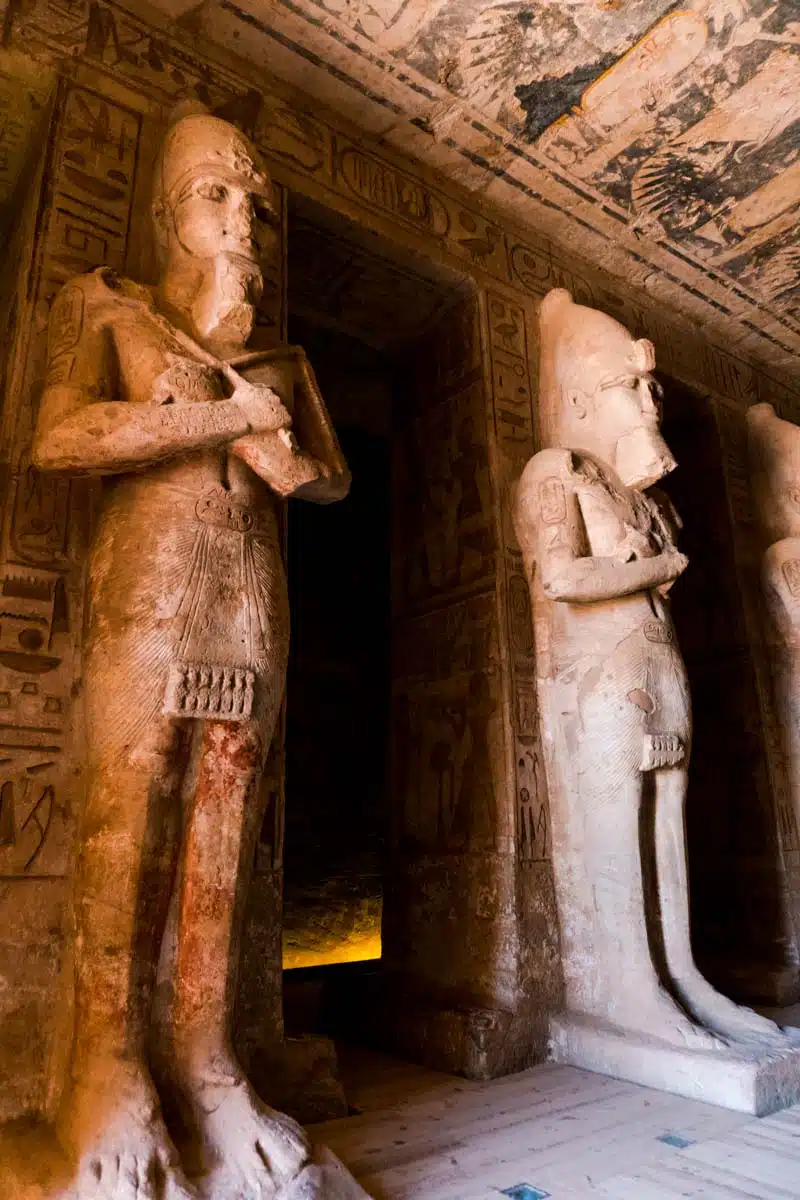
Built by Ramses II in honour of himself and his favourite wife, Queen Nefertari, the temples of Abu Simbel are also a dedication to the sun gods, Amon-Ra, Ptah, and Ra-Horakhty.
Frankly speaking, the Pharaoh built the temples to intimidate his enemies and ordain himself as a god — what a brag!
Still, you can’t quibble with the final result – two glorious temples, the main one and a smaller one dedicated to Ramses’ wife Nefertari, glinting in the sun overlooking the vast waters of Lake Nasser.
Top Tip: Abu Simbel is best visited on a day trip from Aswan and you can choose to do it by car or by air.
Brilliant Things to See & Do in Egypt
Delve into History at Karnak Temple
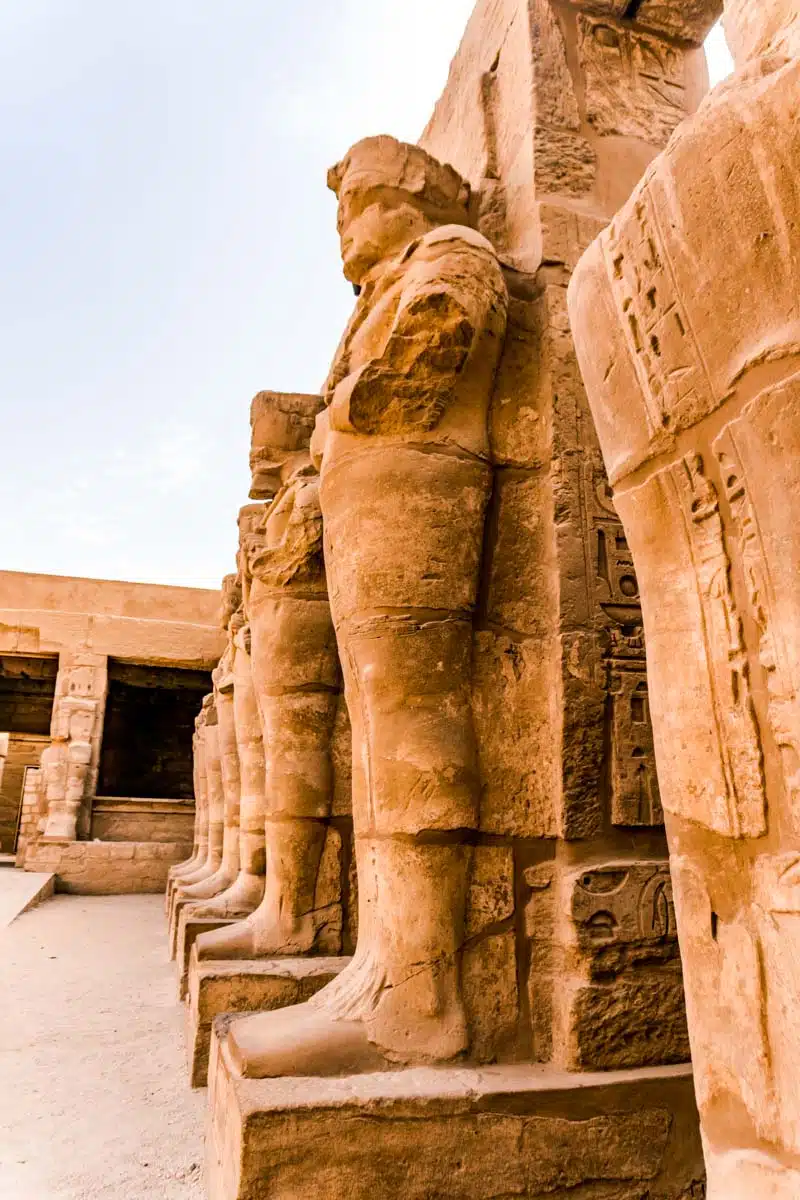
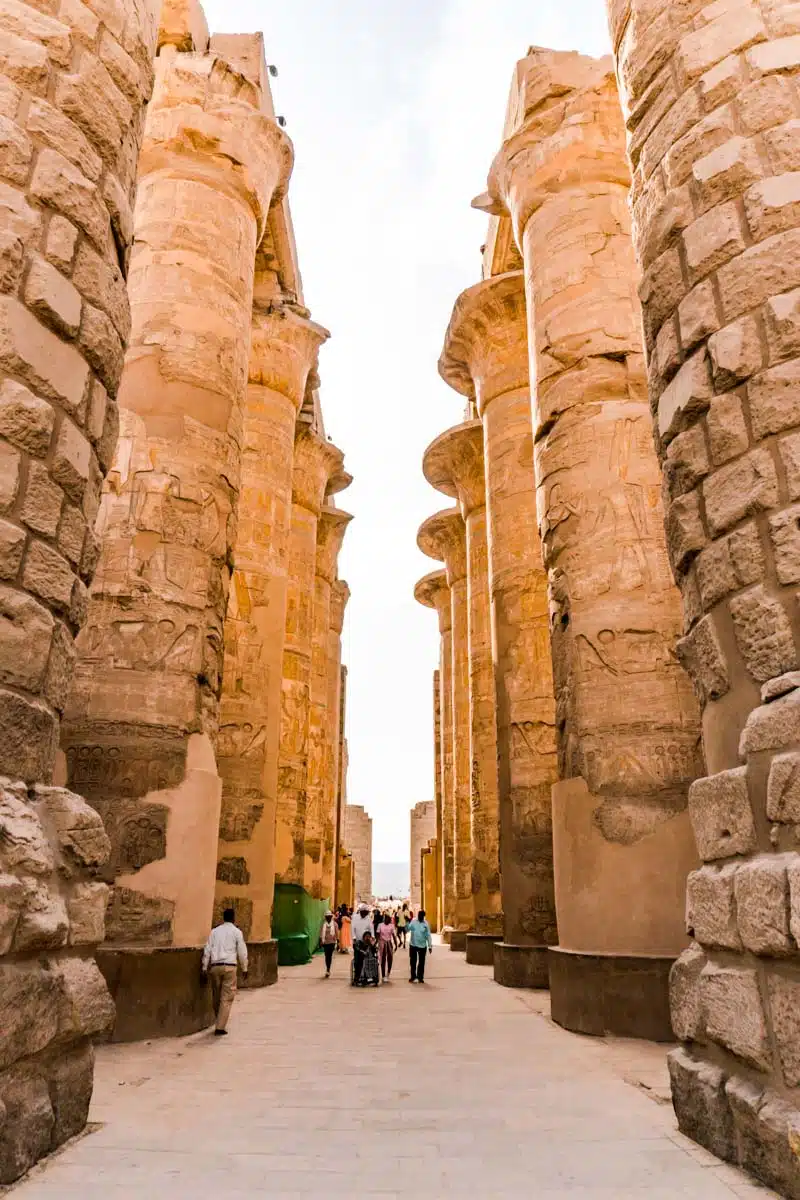
Despite Egypt being full of temples, the wonders of each one never cease to amaze me. But Karnak Temple stands head and shoulders above the rest.
Built over the course of 1,000 years, according to legend, this religious complex is where the sun god Amun-Ra lived with his wife Mut, and son, Khonsu.
You should set aside at least a couple of hours (preferably a half-day) to explore, but if you really shouldn’t miss the stunning Hypostyle Hall.
Wander Around Coptic Cairo
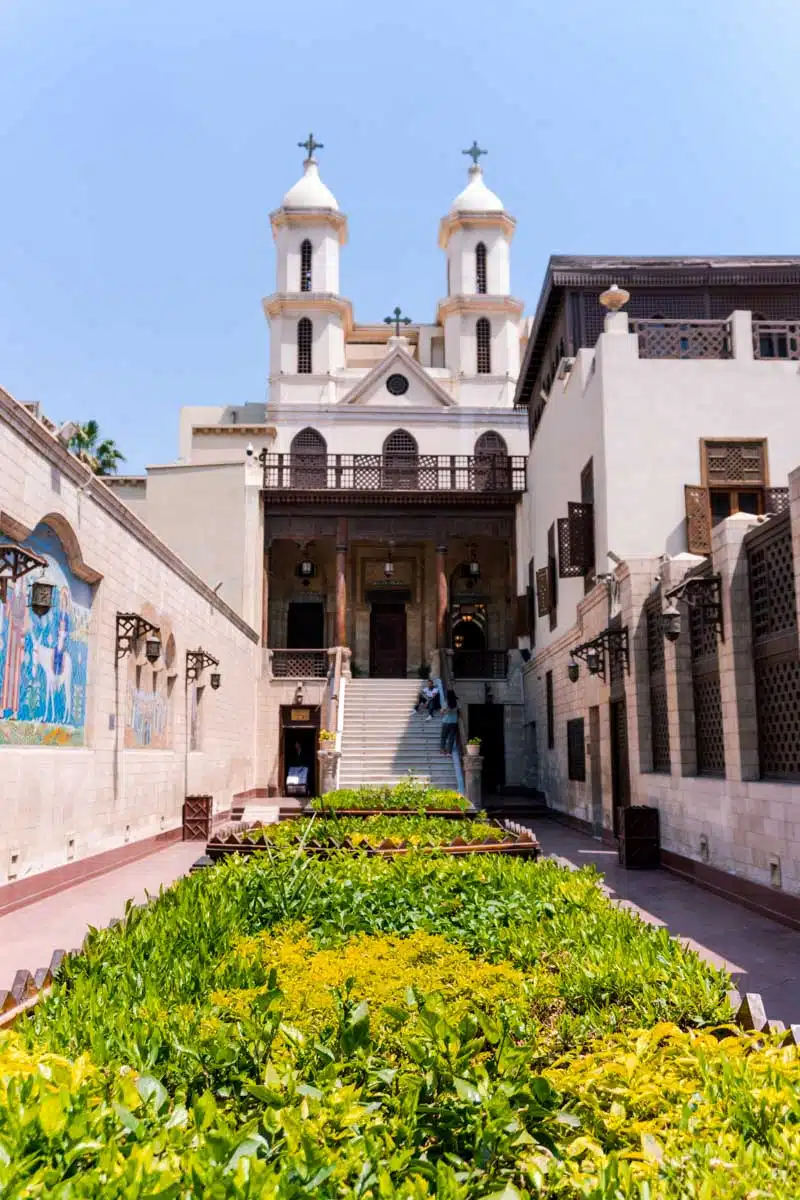
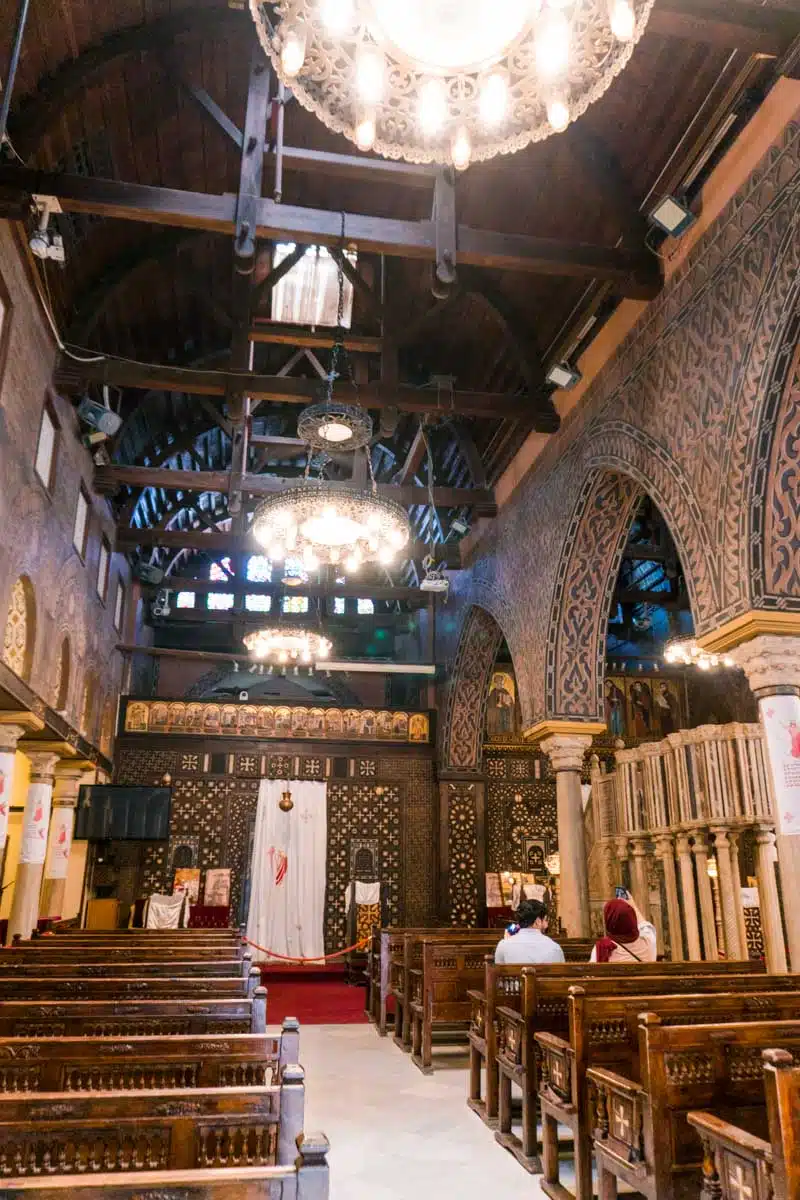
As I mentioned earlier in this guide, Egypt is more than pyramids and deserts. The nation also has a profound Christian history dating as far back as the 1st century A.D – nowhere is this more visible than in Cairo’s Coptic Quarter – a maze of centuries-old churches and historical sights – as well as the understated Coptic Museum.
In the Interfaith Complex, you’ll find the white-stone Roman-built fortress of Babylon. Synagogues and other places of worship predating the founding of modern-day Cairo are there as well.
This stronghold of Christianity offers an exceptional Egypt sightseeing experience, making it one of the best things to do in Cairo — no pyramids involved.
Top Tip: The Coptic Quarter can be a bit of a maze – get the full lowdown on this tour of Old Cairo.
Visit the Egyptian Museum (Or the Grand Egyptian Museum When it Opens)
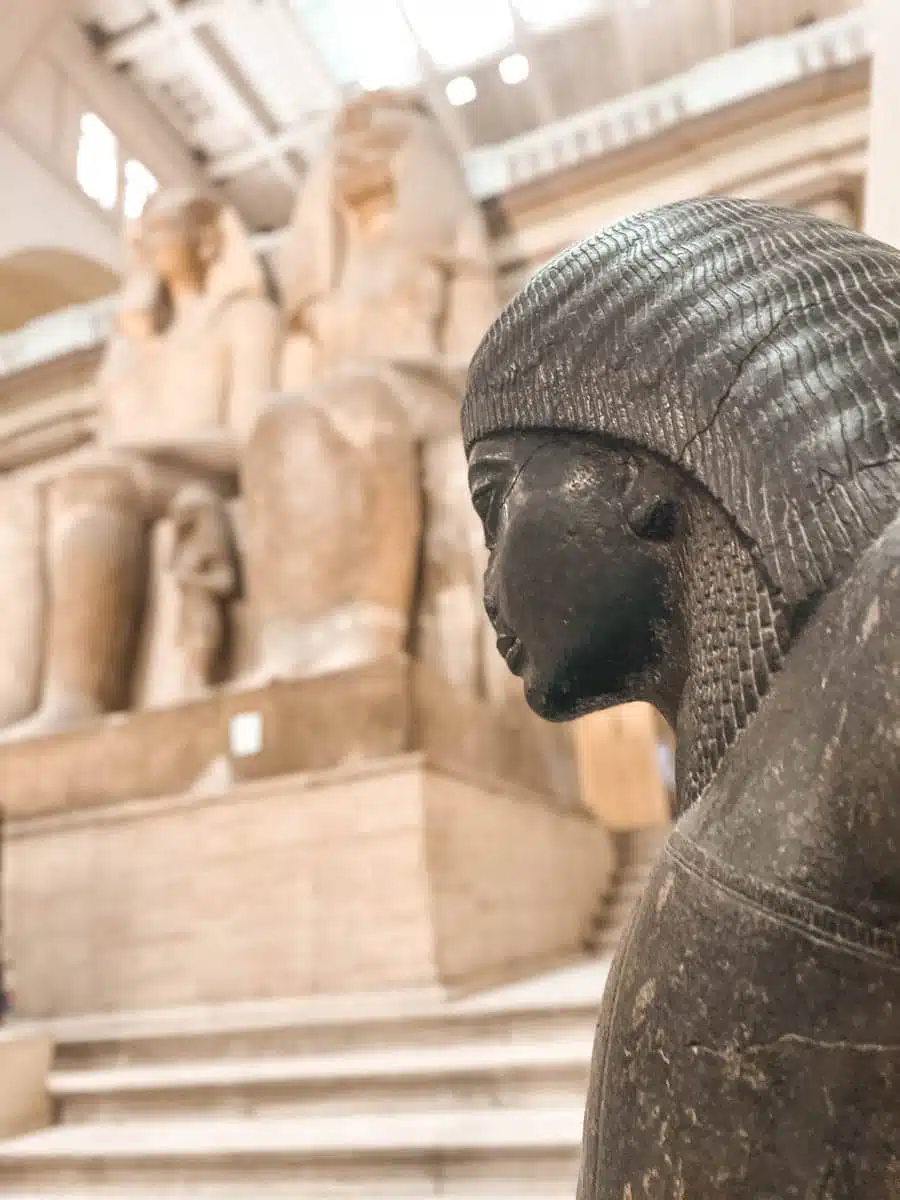
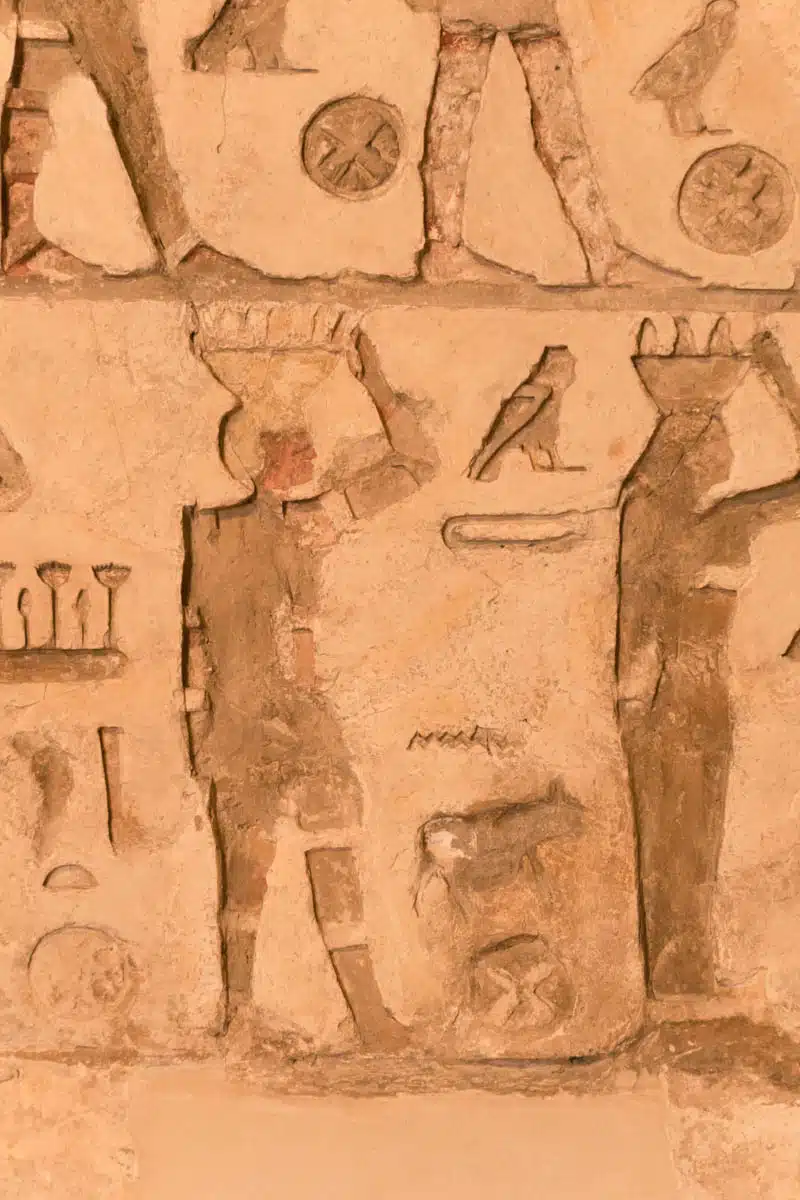
The Egyptian Museum — not confused with the newly built Grand Egyptian Museum — is home to a collection of ancient artefacts and antiquities. If you want to see the country’s history in one place, this is where to go in Egypt.
The Neoclassical French-designed building sits centrally in the heart of Tahrir Square, making a perfect stopover on a Cairo walking tour.
Top Tip: The Egyptian Museum will be replaced with the Grand Egyptian Museum when it opens later this year. The new museum promises to be one of the biggest in the world and will definitely be one not to miss.
Explore Islamic Cairo
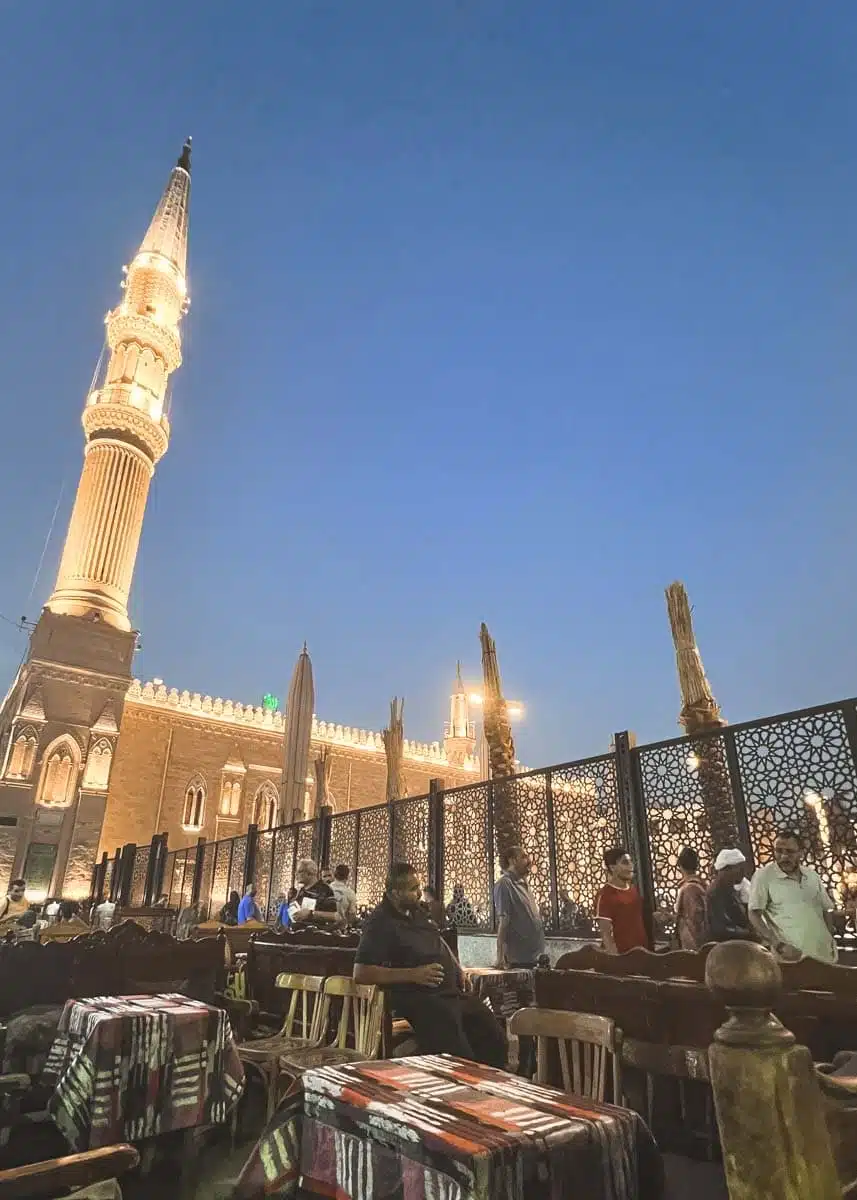
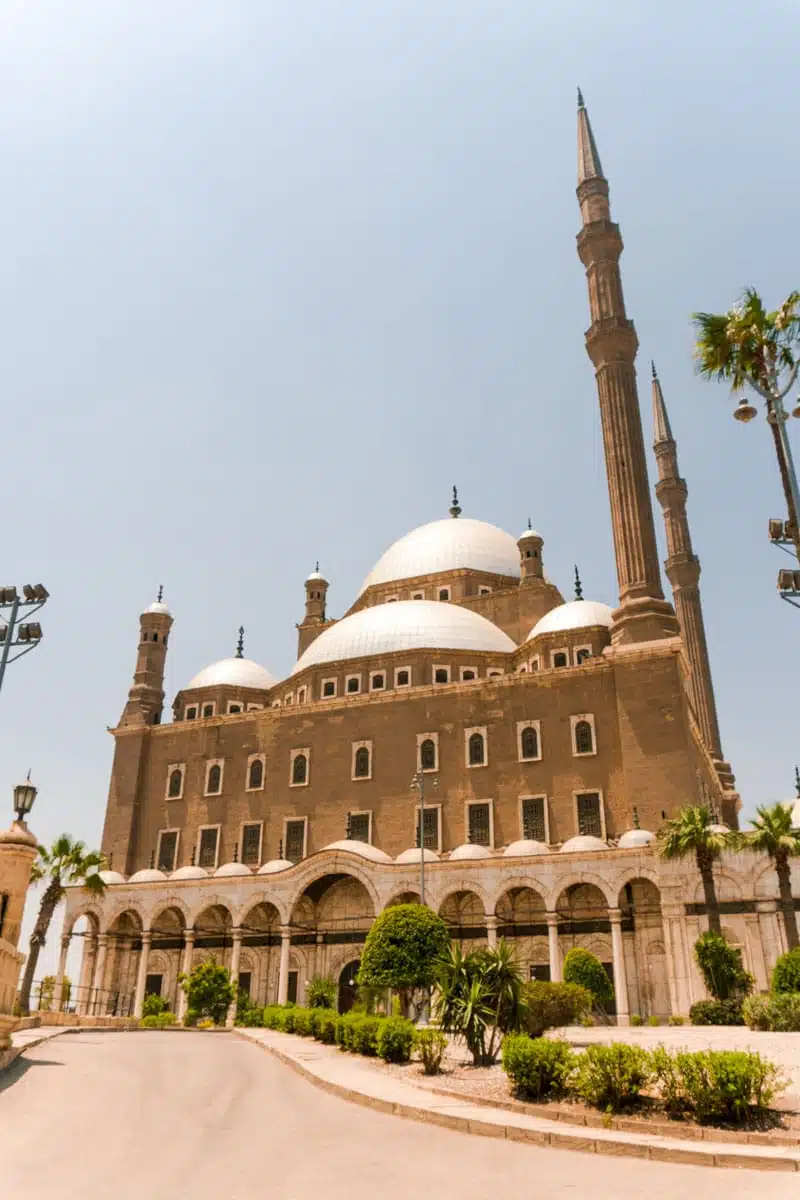
Among the several conquests of Egypt, the Islamic caliphate expanded its civilisation into the country in the 7th century, introducing the Muslim religion that now reigns.
As a symbol of conquest, the caliphate built a new capital in an area now known as Islamic Cairo.
Roam around the ancient city, full of dome-topped mosques, madrassas, and mediaeval fortifications like the Salah al-Din Citadel.
A full-day private tour includes visiting famous places in Egypt like the Hanging Church in Coptic Cairo, the Khan el-Khalili Bazaar, and the Mosque of Muhammed Ali Pasha.
Top Tip: Want to see the best of Cairo in a short time? Read my two-day Cairo itinerary.
Go Diving in the Red Sea
Still, think Egypt has nothing but pyramids? Let’s explore the salty Red Sea, and I’m not just referring to seawater.
Named after its noticeable colour variations, this saline inlet is one of the most heavily travelled channels globally, often carrying maritime cargo between Asia and Europe.
Apart from its significance in global supply chains, the gulf is also home to over 1,200 species of fish and 250 species of gorgeous coral. So take a Red Sea cruise and discover magnificent scuba diving and snorkelling spots – it has some of the best dive sites in the world.
See the Ancient Structures in Saqqara
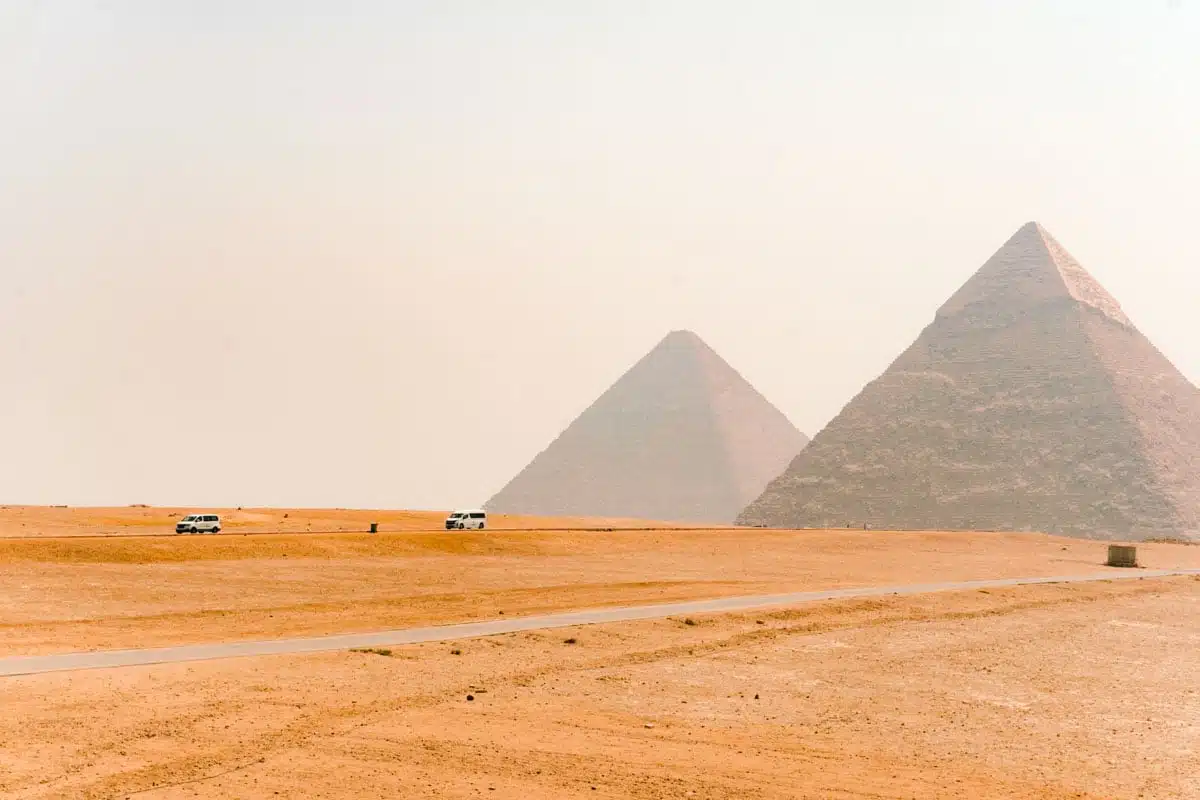
Saqqara — also spelt as “Sakkara” — is hands down one of the richest architectural sites in Egypt.
Prominent for being an ancient burial ground for nobles and a destination for many cultic pilgrims.
However, the highlight of Saqqara is the Step Pyramid of Djoser — this 4,700-year-old stone structure is the oldest in Egypt and, indeed, the world.
Explore the fascinating interior on a full-day tour, and wander the bewildering series of tunnels and burial chambers of many royals, including Pharaoh Djoser.
Discover the Ancient Egyptian City of Memphis
Another noteworthy ancient capital and one of the most underrated of Egypt’s attractions, Memphis boasts an array of mastabas, pyramids, and temples.
This millenia-old city has long lost its grandeur, but there’s an incredible story in its remains.
The most intriguing sight in Memphis is the limestone Alabaster Sphinx.
Embark on a day tour to Memphis, and stand in awe of one of the world’s biggest and oldest monolithic statues.
Marvel at the Mortuary Temple of Hatshepsut in Luxor
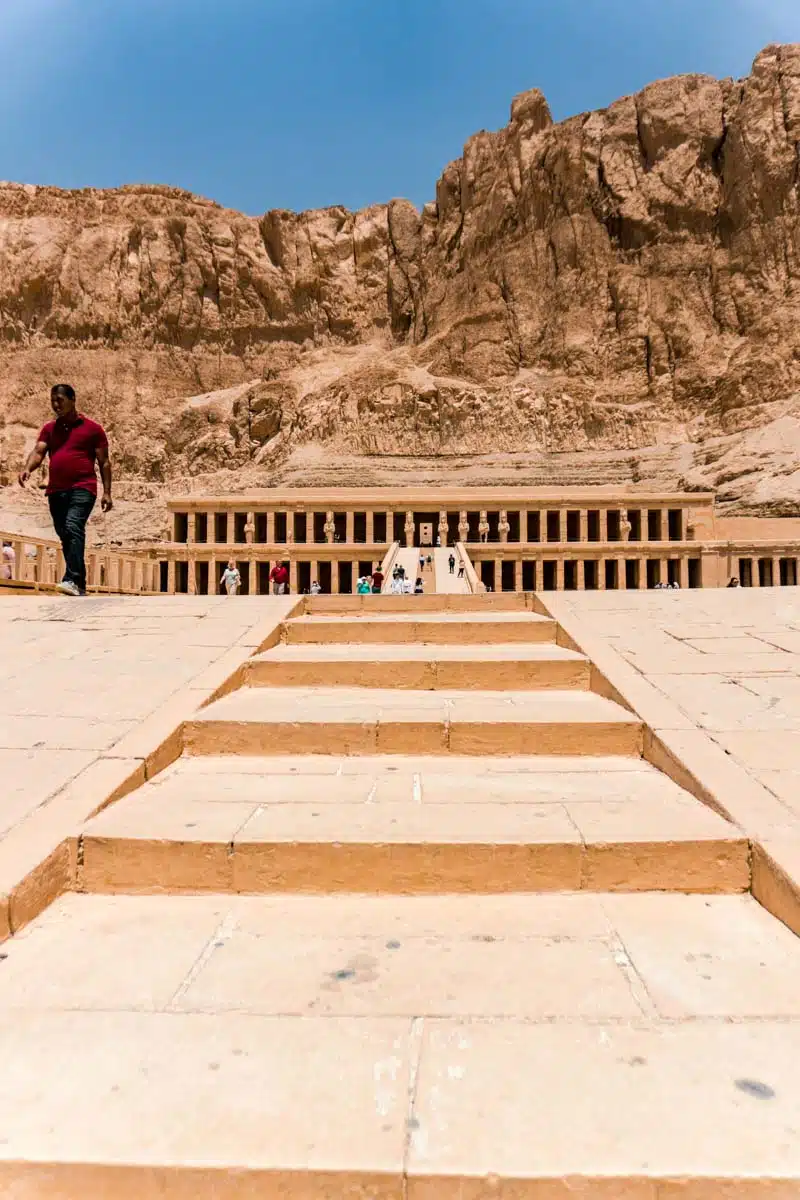
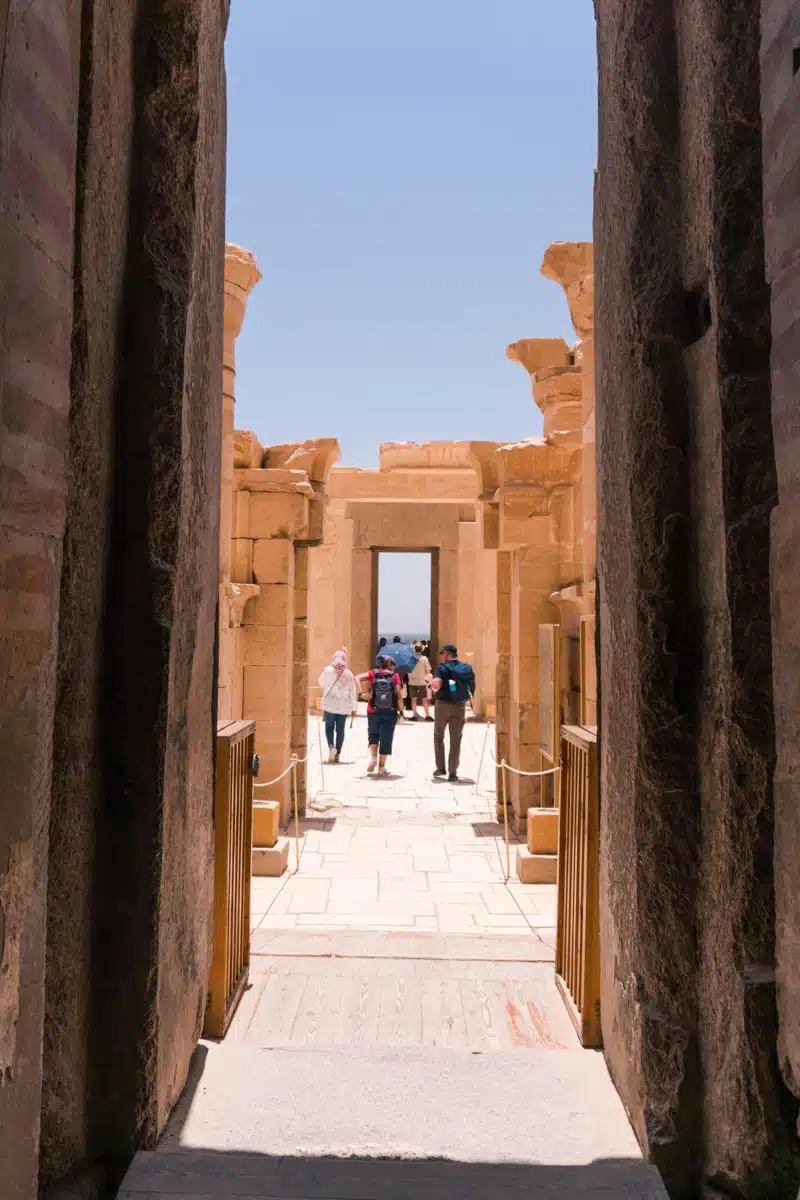
At this point, you’ve realised that Egypt isn’t shy of temples and tombs, but each is unique, carrying complexities that serve as a doorway to ancient civilisations.
To put it quite bluntly, the Mortuary Temple of Hatshepsut in Luxor is exceptional.
Unlike many temples in Egypt, this one pays homage to Pharaoh Hatshepsut, one of the few historically recorded female Pharaohs — can someone say “Girl Power?”
Don’t go expecting a tomb – Hatshepsut wasn’t buried here. Instead, she lies in The Valley of the Kings, nearly 4 km away.
See the Beautiful Philae Temple in Aswan
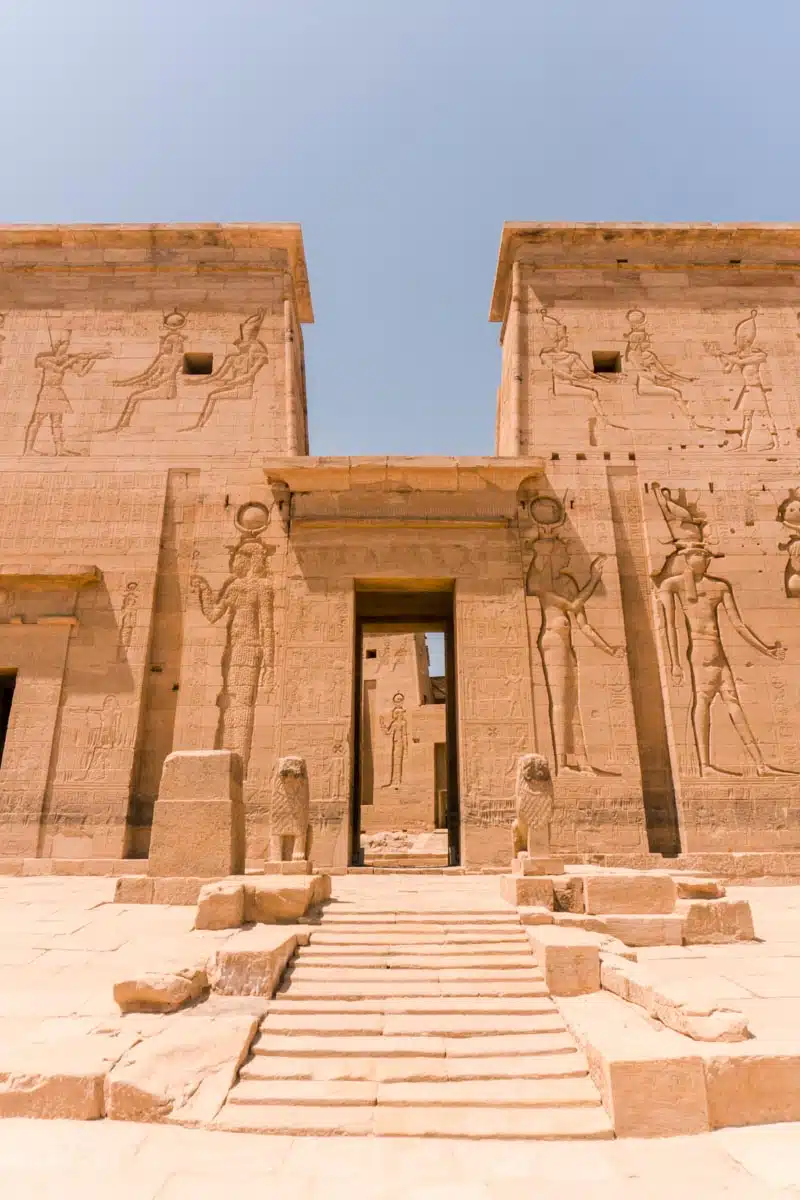
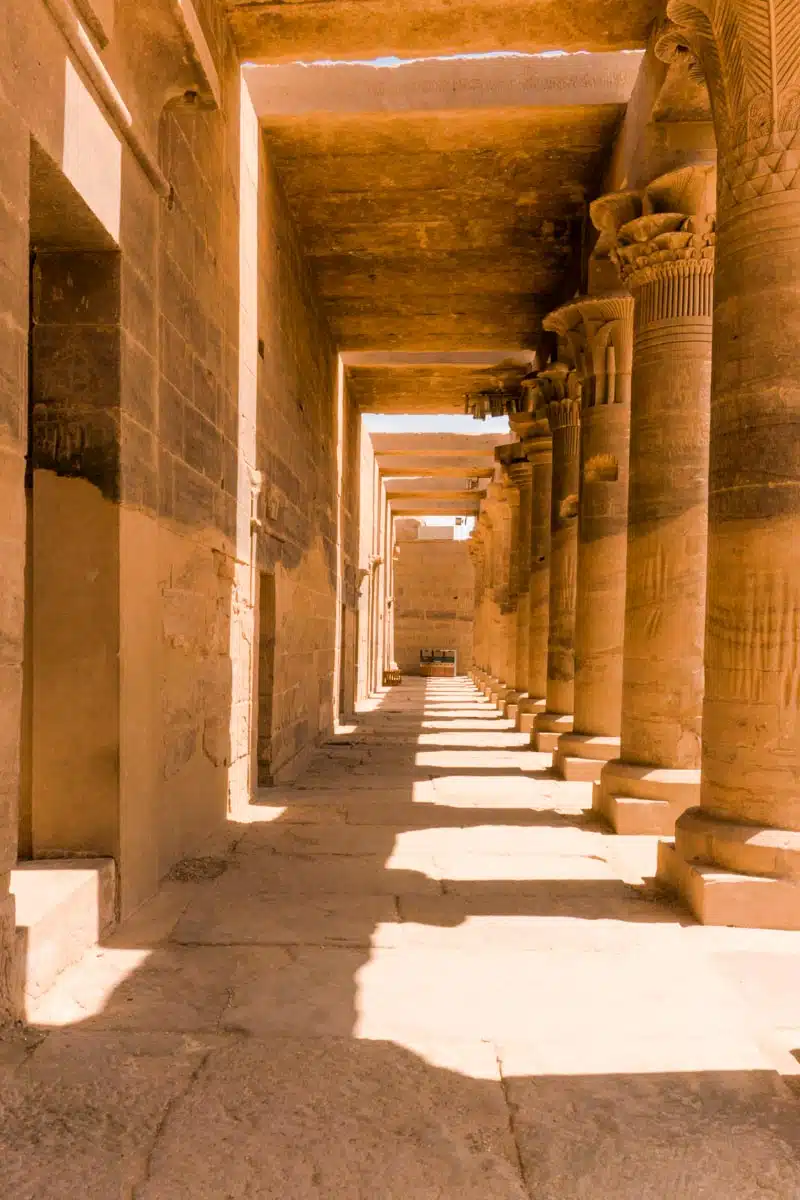
Known as the “Pearl of Egypt”, Philae Temple illustrates the unimaginable beauty of the Aswan region. I hate to play favourites (OK – I kind of love it) but Philae really is one of the most beautiful temples you’ll find in Egypt.
The tiny island has lush vegetation surrounding stone-carved structures with ancient hieroglyphs. The most striking is the giant carving of Isis, the goddess of the moon.
Take a walk around this monumental storybook and pay close attention to the tales it tells. Marvel at intricate wall carvings depicting a captivating mythic narrative of Isis bringing her husband Osiris back to life and giving birth to their son Horus. Look closely and you’ll also see carvings depicting the mummification of Osiris.
Spend Time Exploring Aswan
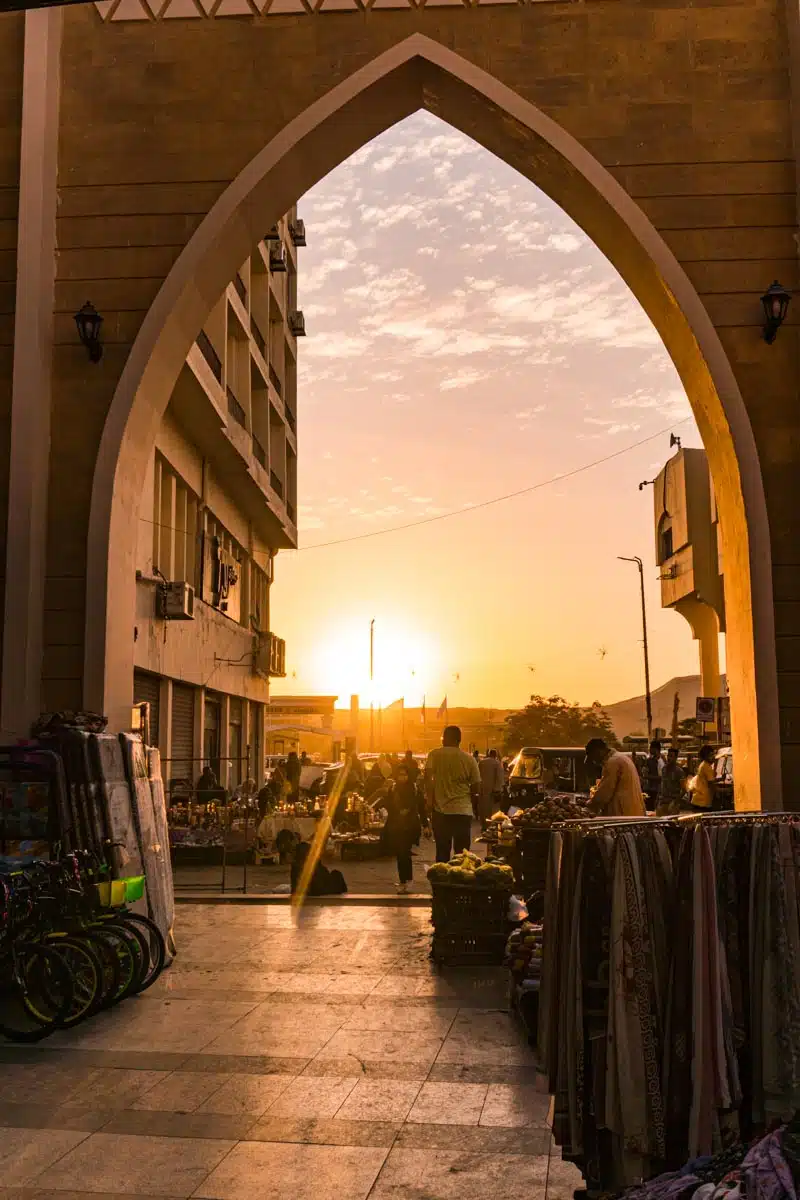
Don’t be surprised if Aswan becomes your favourite city in Egypt – you certainly won’t be the first person it’s happened to.
This busy market city holds some of the most unique and historically rich places to see in Egypt. Spoiler alert — Philae Temple is just the beginning.
Begin your trip at the Tombs of the Nobles, sitting majestically atop high cliffs overlooking the west bank with spectacular scenes of Aswan.
Then make your way to the prehistoric Nubian Museum, and stroll through the impressive cultural hub full of antique exhibitions and artefact collections from various ages.
Stop by the riveting Unfinished Obelisk before taking a boat trip to the colourful Nubian Village for a much-needed escape from the bustling city.
Top Tip: Want to know more? Read my guide to the best things to do in Aswan.
Pop into the Temples at Edfu
Comfortably sitting along the west bank and tucked between the cities of Esna and Aswan, find a serene getaway in the ancient settlement of Edfu.
With a population of fewer than 70,000 people, this preserved site houses the Ptolemaic Temple of Horus. If you’re looking for a less crowded place to go to in Egypt, Edfu should be at the top of your list.
See the Double Temple at Kom Ombo
For more unusual sights of Egypt’s landmarks, the uniquely constructed double temple of Kom Ombo is one for the books.
The ancient Greek-Roman temple is best-known for its mysterious mummified crocodiles – not content with just one or two – there are 40 of them!
Get (Not Too) Lost in the White Desert
You can’t go to Egypt and not go on a desert tour. But this one is like none other, boasting oddly-shaped dunes and the jaw-dropping Bahariya Oasis.
Uncover the oddities of the Black and White Desert and marvel at the picturesque and sprawling views of sandy landscapes that stretch across the horizons.
The Tomb of Nefertari
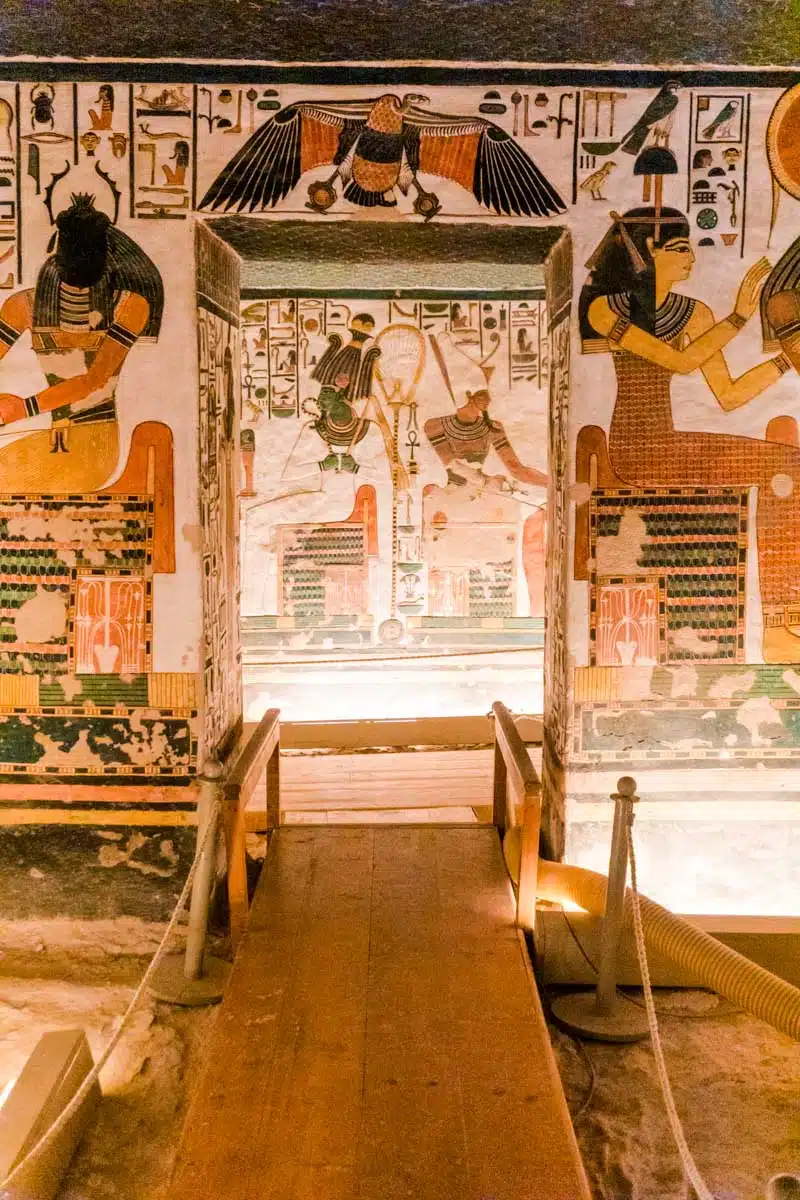
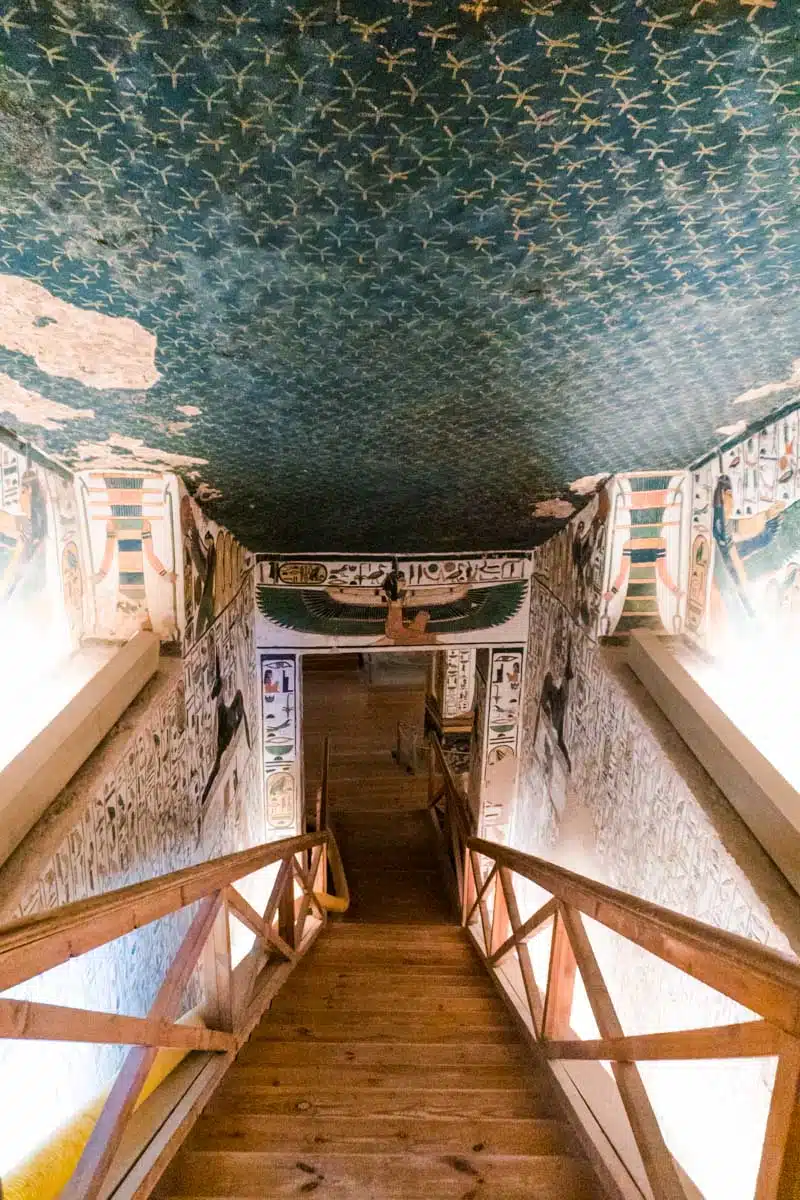
As I mentioned, Queen Nefertari was Ramses II’s first and most beloved wife. Her tomb — also known as the Sistine Chapel of Ancient Egypt — houses some of Egypt’s most ornate and well-preserved paintings.
Radiating with vivid colours and descriptive hieroglyphs, the murals in this tomb surpass the others in The Valley of the Kings and the Valley of the Queens by far — now that’s what I call a queen’s burial. Of all the best places to visit in Egypt, Nefertari’s tomb transports you to the peak of this great civilisation.
Unique Things to See & Do in Egypt: Hidden Gems That are Off the Beaten Track
Check out the City of the Dead
If you’re up for a spooky adventure — the City of the Dead is one of the world’s largest cemeteries. Boasting a sea of seemingly infinite white conical-shaped domes, this city, also called Cairo Necropolis, is where the dead genuinely live among the living.
What do I mean? Due to the high population congestion in Cairo, many low-income earners (about 500,000) built their homes here, filling the gaps between the 7th-century mausoleums.
Tip: If you have a touch of necrophobia, perhaps it’s best to skip this attraction.
See the Nilometer
If you still don’t believe that modern mathematics has to do with the advancement of ancient Egyptian civilisations, here’s a place that will dispel your doubt.
The Nilometer is an old instrument that farmers used to measure the waters of the Nile.
The Nile River’s behaviour could mean life or death for ancient Egyptians. Thus to know whether they should prepare for flood or famine, the citizens built this device to predict the most likely outcome.
Stand Beneath the Towering Colossi of Memnon
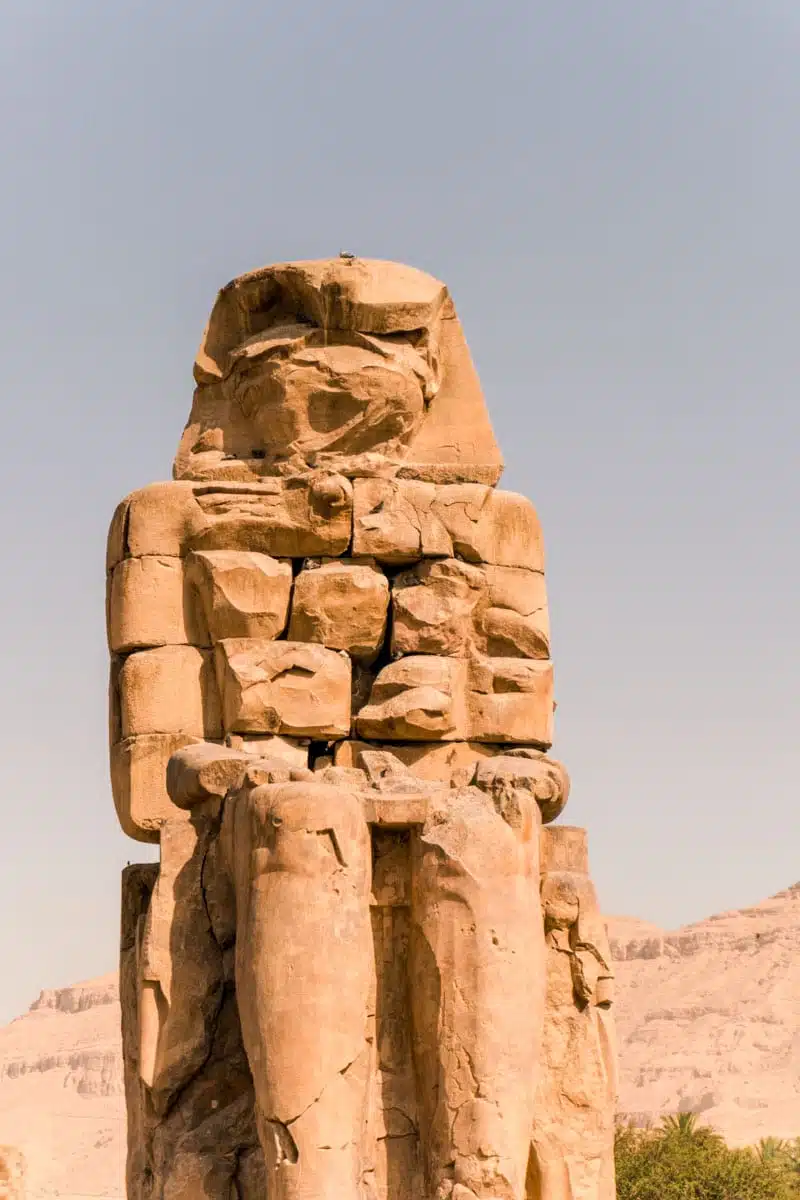
Ancient Egyptians strongly believed in the afterlife, so they would build temples and towering figures to protect their tombs from all kinds of evil. Colossi Of Memnon is one such temple.
Built by Pharaoh Amenhotep III, two towering seated statues of the king sit side by side, guarding his Mortuary Temple against unwanted raiders. These statues survived 3,400 years of changing climates, invasions, and even earthquakes.
See the Rainbow-Hued Coloured Canyon
One thing I bet you thought you’d never see in the arid Egyptian desert is a sprawling oasis of kaleidoscopic hills. Spanning over 800 metres long and 30 metres deep, these rainbow mountains are just 338 km away from Cairo.
With many not aware of this breathtaking geographical marvel, the Coloured Canyon boasts the perfect escape from typically crowded Egypt tourist attractions, giving you a serene visit and tonnes of stunning views.
Delve into the Labyrinth of the Shali Fortress
Closing off this expansive list of places to visit in Egypt, the sensational Shali Fortress boasts a labyrinth of crowded buildings that were initially four storeys high and sheltered hundreds of people.
Get lost in this maze of mud buildings, built using kershef (a mixture of rock, salt, and clay), and witness the best-kept secret of Egypt’s Siwa Oasis.
Things to Do in Egypt: Practical Tips for Your Trip
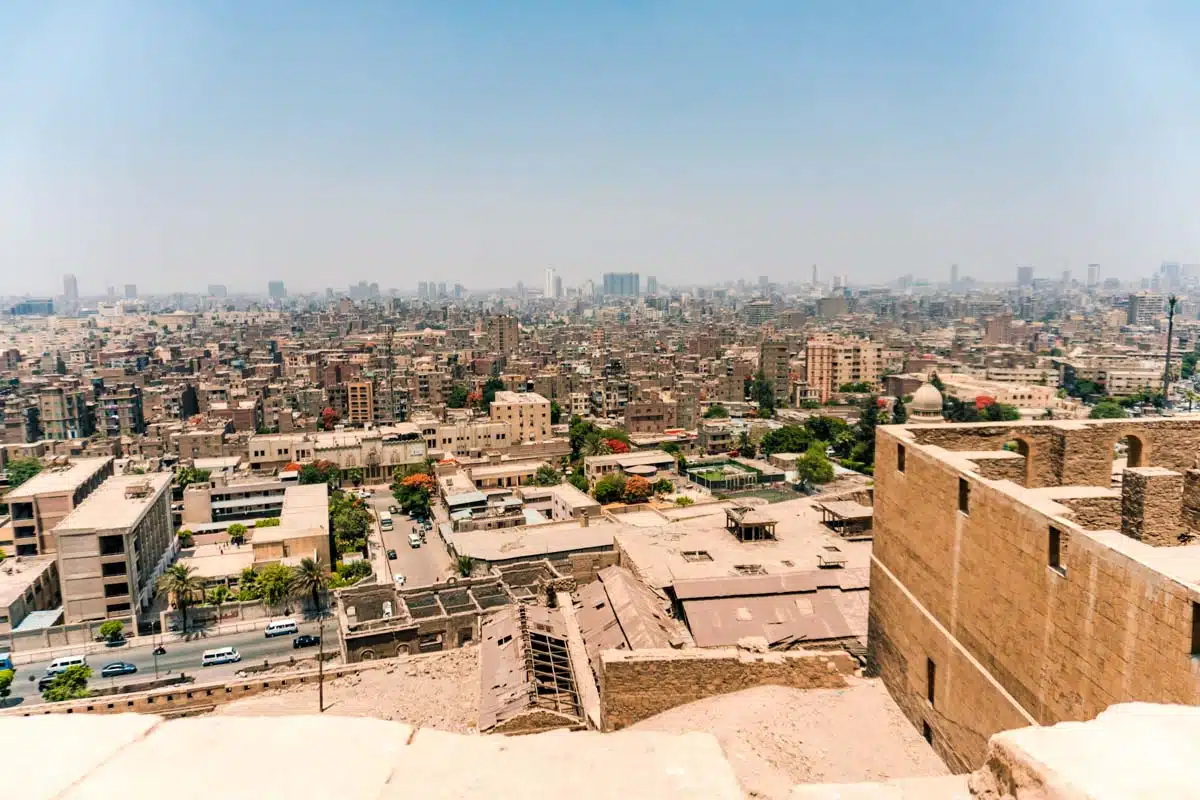
How Long to Visit Egypt?
If you’re looking to explore all these attractions, you’ll need at least a week or two to get through just half of these listed excursions.
Want more detail on how much time to spend at each location? Start with my 10 days in Egypt itinerary.
Best Time to Visit Egypt
Egypt’s arid climate is dry, with hot summers and cool winters with rainfall along the coastal areas.
However, the best time to visit Egypt is between October and April. During this time, temperatures are cooler, but you’re still guaranteed a lot of sun.
May to July is peak season, so flight tickets skyrocket.
Top Tip: If you’re in the planning stage – check out my super-detailed guide on how much an Egypt trip costs to find out when to catch the best deals.
Where Should I Stay in Egypt?
With so many tourists visiting Egypt every year, the country has a sophisticated network of hotels and accommodation, from budget-friendly to mid-range and luxury. Also, check out this guide on where to stay in Cairo for more lodging options.
Steigenberger Pyramids Cairo Hotel (Mid-Range)
Boasting stunning scenes of the Pyramids of Giza and the Nile’s west bank, the Steigenberger Pyramids Cairo hotel offers an ideal stay for a seasoned 2 Days in Cairo itinerary.
Four Seasons Cairo At The First Residence (Luxury)
The Four Seasons Cairo At The First Residence offers exclusive Nile River sights and sweeping views of the greater Cairo skyline for a more luxurious stay. If you book the right room, you may also get glimpses of the Giza Pyramids as a stunning backdrop.
Recommended Tours in Egypt
- From Hurghada: Luxor Valley of the Kings Full-Day Trip
- Giza Pyramids and Sphinx: Half-Day Private Tour
- Cairo: Dinner Cruise on the Nile River with Entertainment
Things to Do in Egypt: Map
Love This? Save and Share on Pinterest
